Page 9 Friday 8/11/2023 - Hilo, Here We Come
The island of Hawaiʻi is the youngest and largest island in the Hawaiian chain. Nearly twice as big as all of the other Hawaiian Islands combined (hence, its nickname, "Big Island"), its sheer size is awe-inspiring. You can travel through all but four of the world's different climate zones here, ranging from Wet Tropical to Polar Tundra, a result of the shielding effect and elevations of the massive volcanoes Maunakea and Maunaloa.
Hilo is a town on Hawaii, commonly called the Big Island, in the state of Hawaii. It's known for Wailuku River State Park, featuring Waianuenue, or Rainbow Falls, with its colorful mist effects. The bubbling basalt-lava rock pools known as the Boiling Pots are nearby. To the south is Hawaii Volcanoes National Park, home to rainforests and the active Kilauea and Mauna Loa volcanoes.

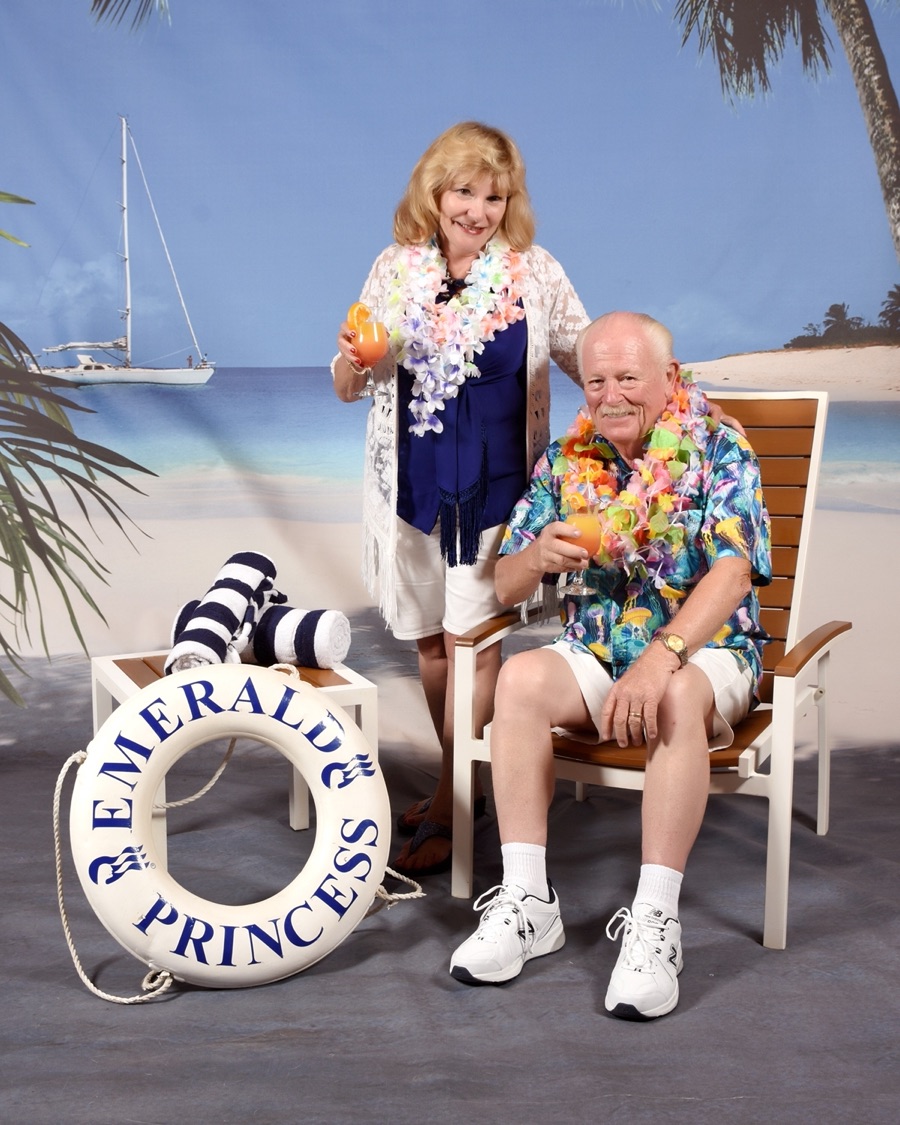 Amazing, Paul kept his white pants white for more than 30 minutes
Amazing, Paul kept his white pants white for more than 30 minutes
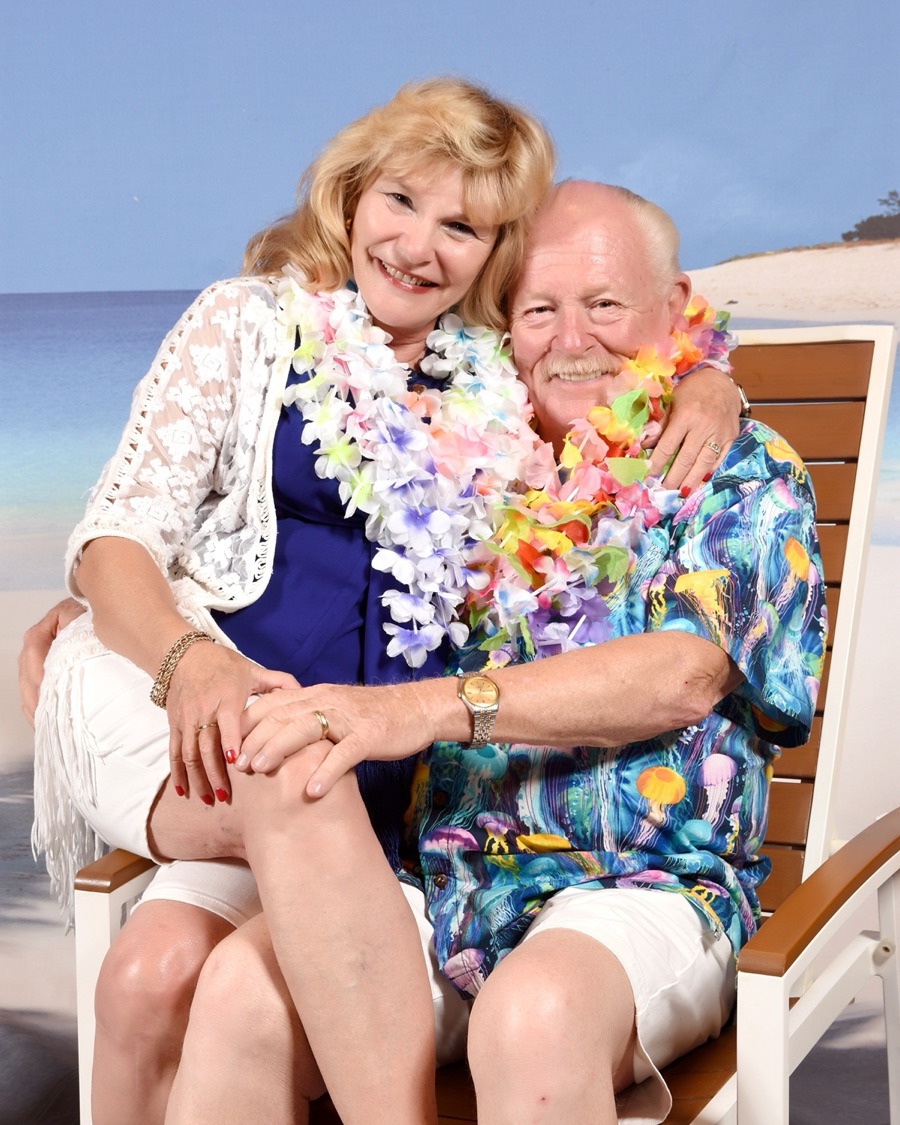
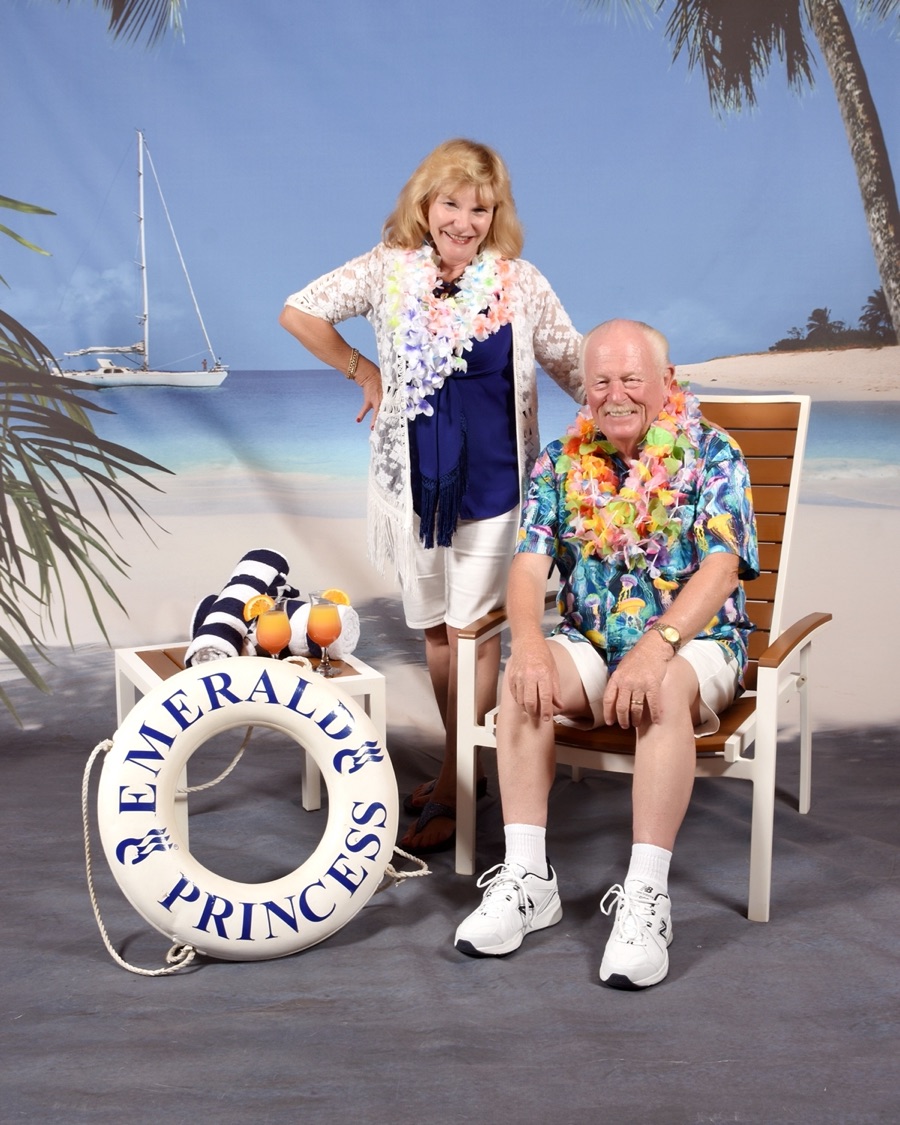
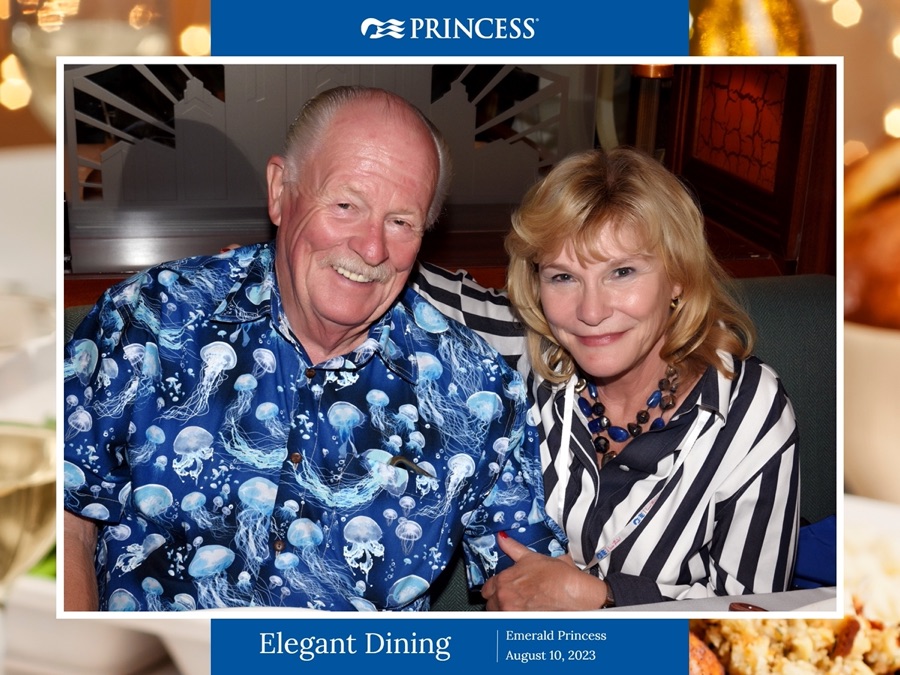

Hilo Harbor is located on the east coast of the Big Island, about 2.5 miles from the Hilo International Airport, and just over 2 miles from downtown Hilo, Hawaii's second-largest city. The harbor has been instrumental in the formation of the city of Hilo.
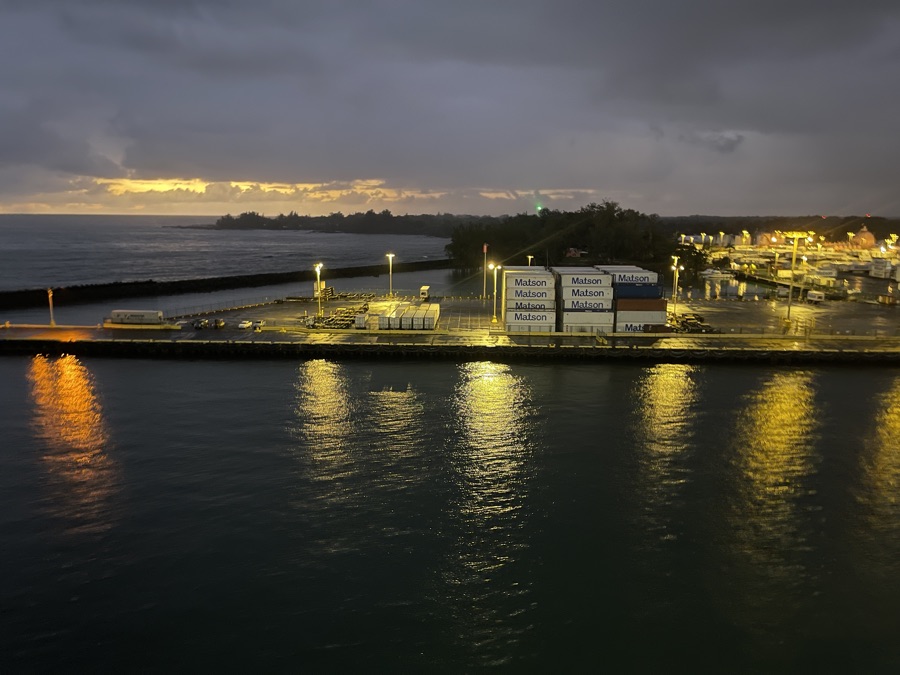
The Matson Lines was well represented
Did You Know? - The world's largest processor of macadamia seeds, the Mauna Loa Macadamia Nut Corporation is headquartered just south of Hilo. The company was named after the Mauna Loa volcano, and is a subsidiary of The Hershey Company.

The sodium lighting gives the harbor an eerie look.
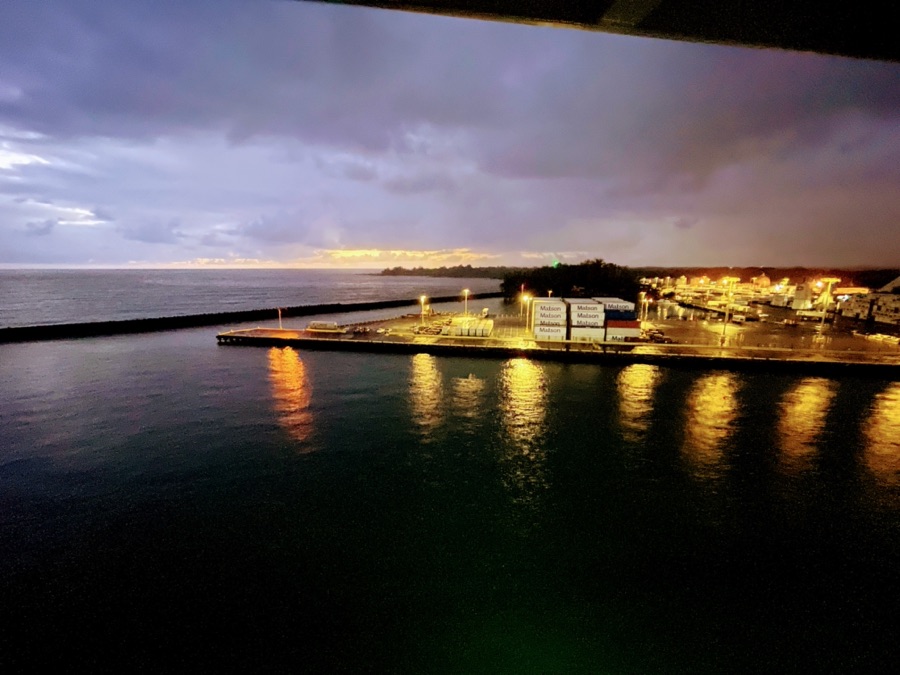
The breakwater protects the harbor form the oceans waves.
Did You Know? - The county seat of the Big Island, Hilo is the oldest city in the Hawaiian island chain. This historic town has a lively music, arts, and food scene, plus stunning natural beauty with it's waterfalls and beaches.
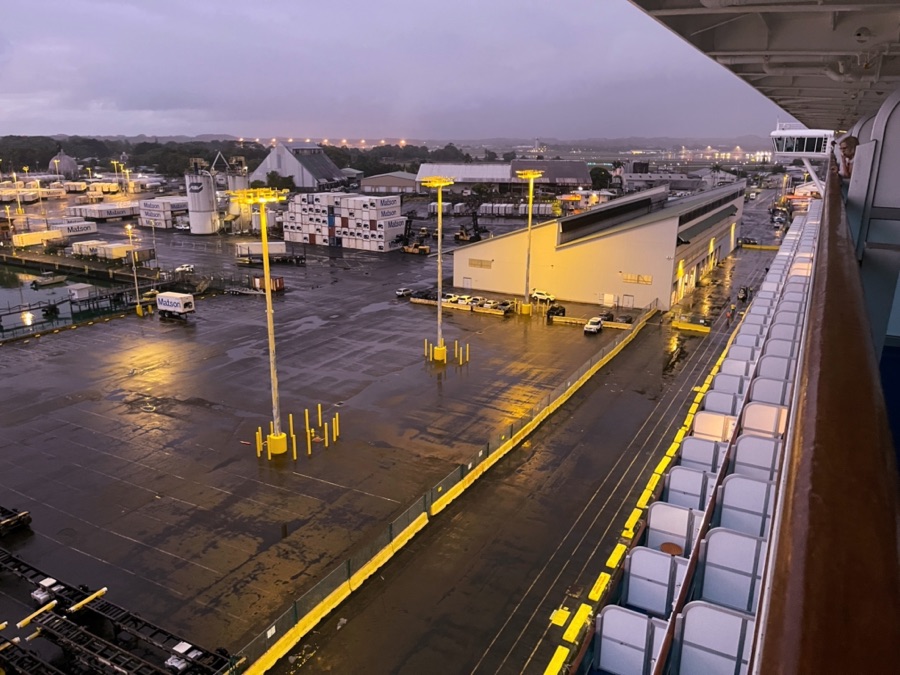
The port is just about to wake up!
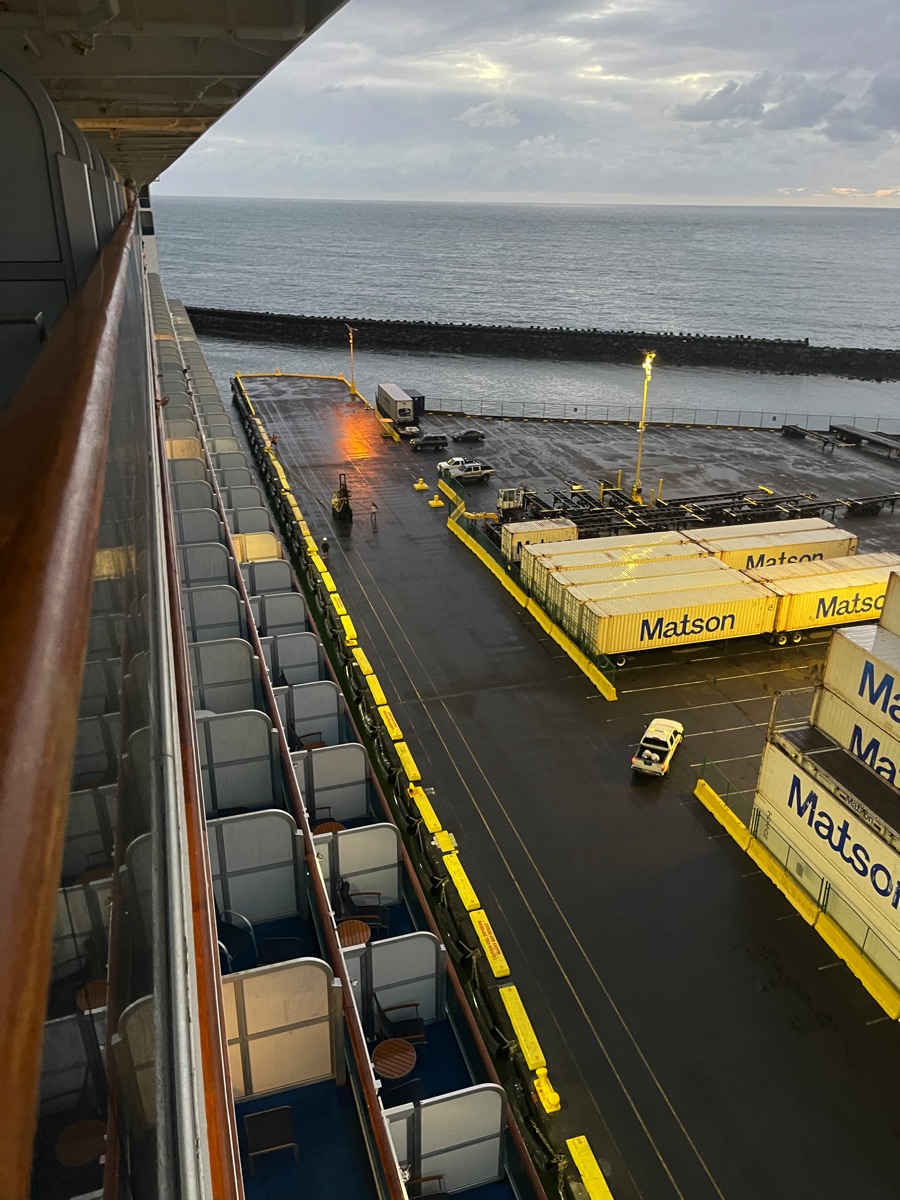
The mooring lines were set at 6:00 am sharp!
Did You Know? - Why does Hilo have yellow lights? So as not to interfere with astronomy work on top of Mauna Kea, all 15,000 or so street lamps on the island are a special yellow with light generated by a Light Emitting Diode selected for a particular shade of tallow.

The view from our suite.

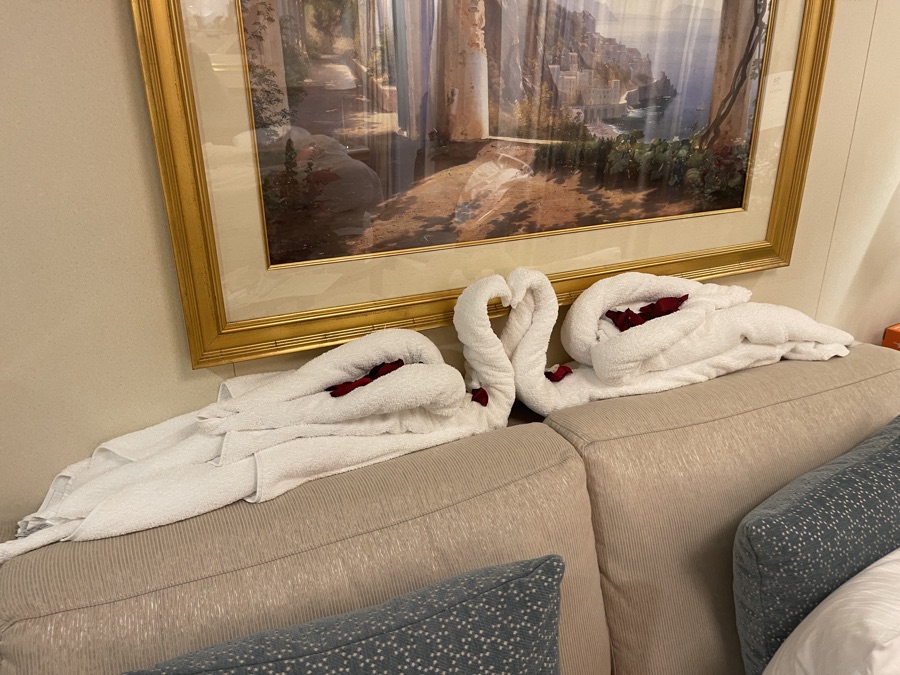
The Love Birds are still watching us!

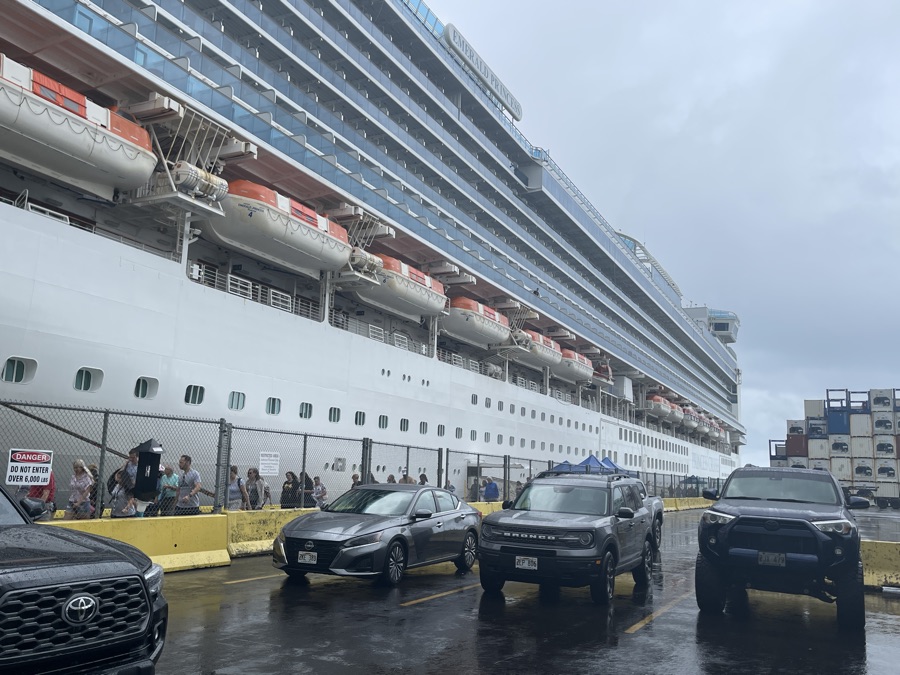
The ship is almost 1000 feet long!
Known for its dramatic waterfalls, lush rain forests and blooming gardens, Hilo is full of amazing sites and world-class beauty. It's also known as the wettest place in the United States, averaging about 12 in. of rain per month.
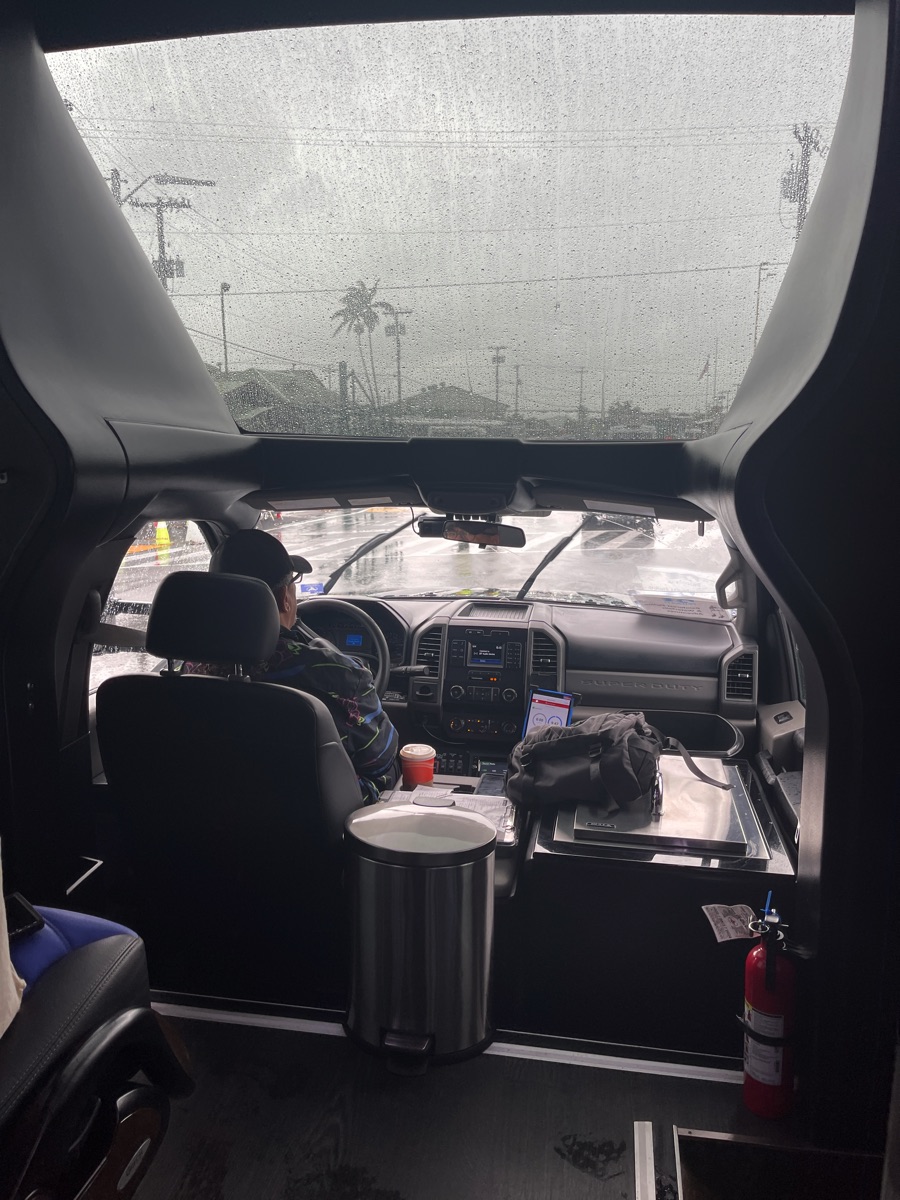
In the bus on our way to the zip lines
Yes, it was raining
Zip up to 65 miles per hour on 9 long-lines, over 14 rushing waterfalls, suspension bridges, and treetops. Experience exhilarating panoramic views of the Pacific Ocean in this one-of-a-kind zip-line tour

We walked to the shed where we got suited up!
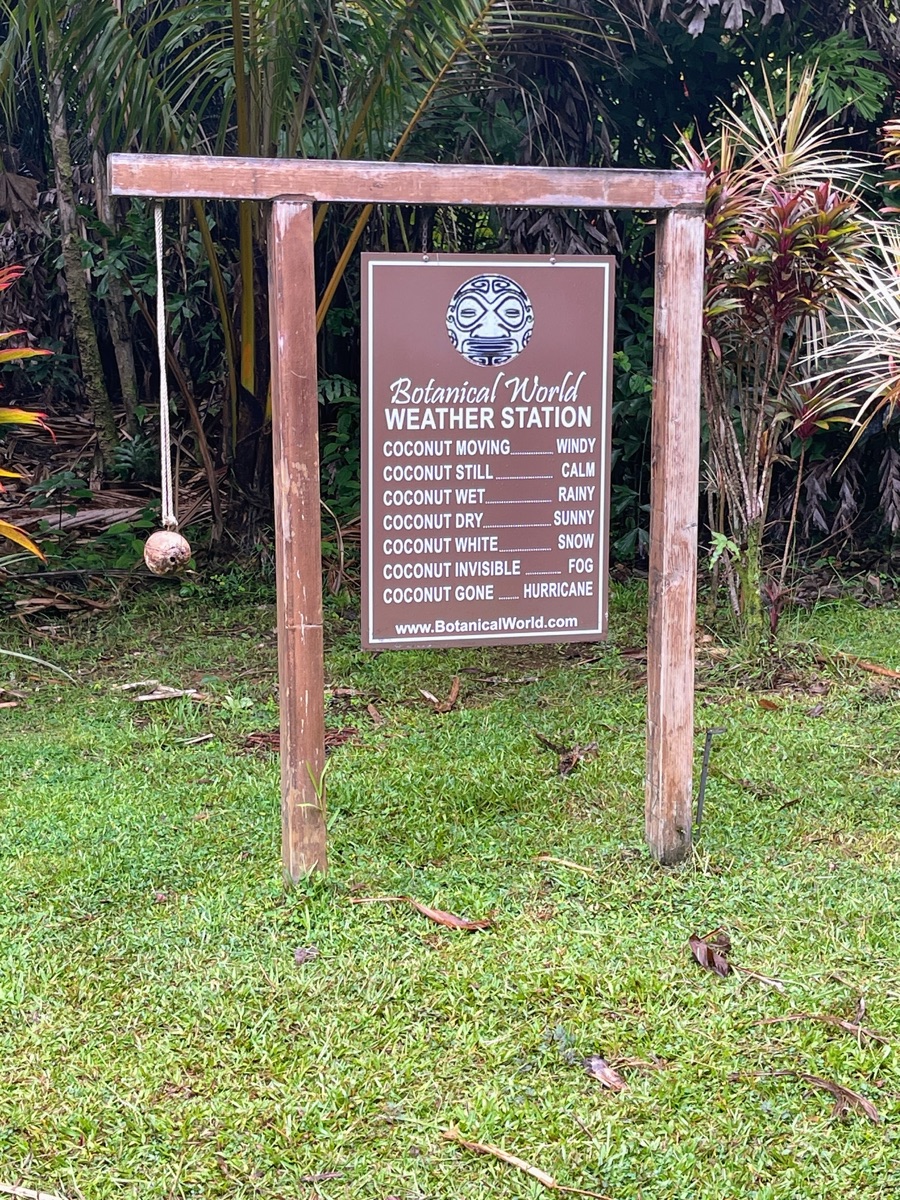
No kidding!
Our group was split into two making the waits at the individual zip lines shorter. We walked in their botanical garden and it was very interesting.
Ohi'a 'ai are red, a bit crunchy, nicely sweet, and absolutely delicious. In Hawaii, where they grow prolifically, they are more commonly known as mountain apples. In other parts of the Pacific, they are also known as Malay apples. They range from pale pink to brilliant, dark, ruby red. They're crazy shiny, slightly pear-shaped (or heart-shaped, if you're a romantic), and when they're in season, they seem to be absolutely everywhere.
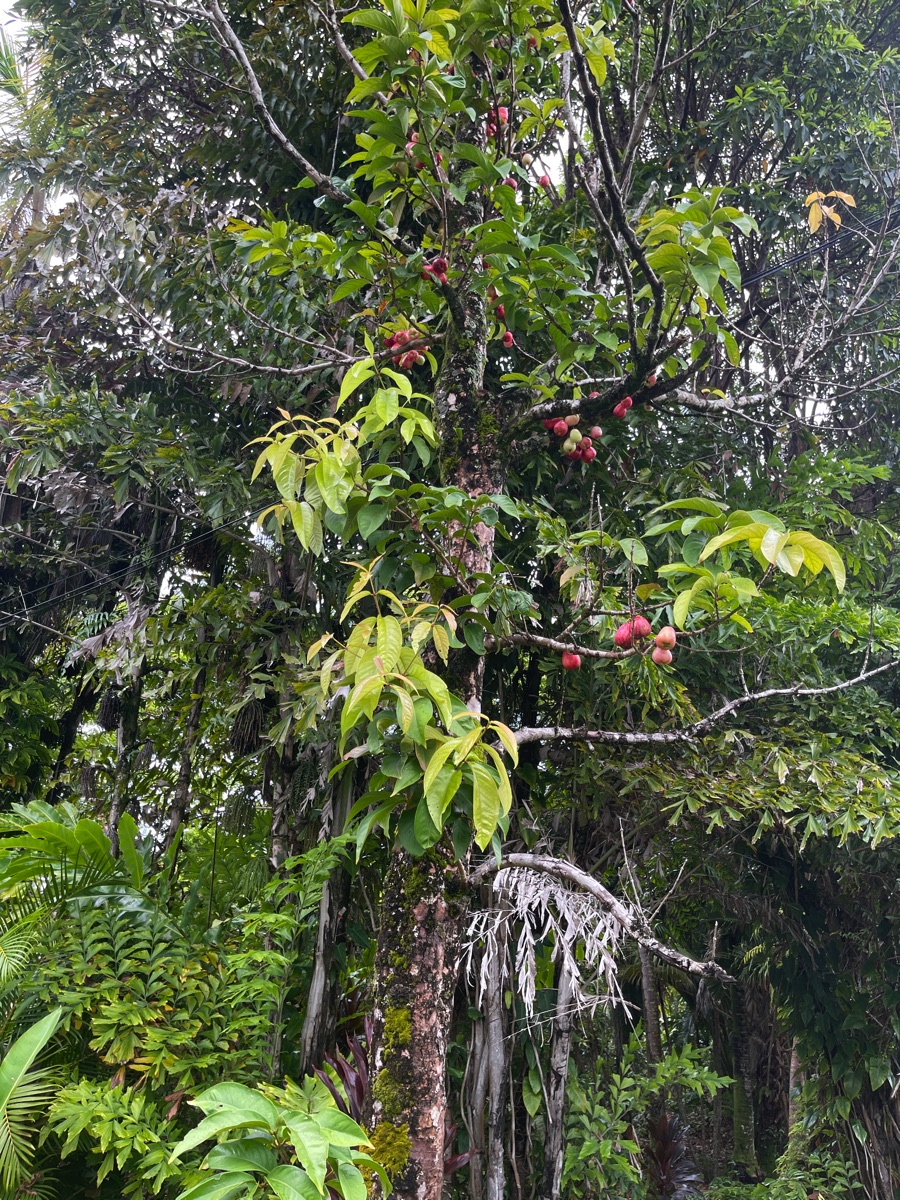
They are usually quite high in the trees.
Some people liken their shape, taste and texture as apple-like, just like their color. Ohi'a 'ai are remarkably shiny, like a well polished apple, but their lovely soft, yet somewhat crunchy texture is much more like a ripe Comice pear than any apple.
The flavor, too, has a light sweetness and delicate flavor that isn't uncommon to someone who has eaten a pear or two in their time.
Inside the shiny skins is soft, cream-colored flesh that also will remind many people of...yes, you guessed it: pears. At the center of ohi'a 'ai are dark, hard seeds. In this way, ohi'a 'ai seeds seem much more like date pits than anything else (and no, you shouldn't eat them).
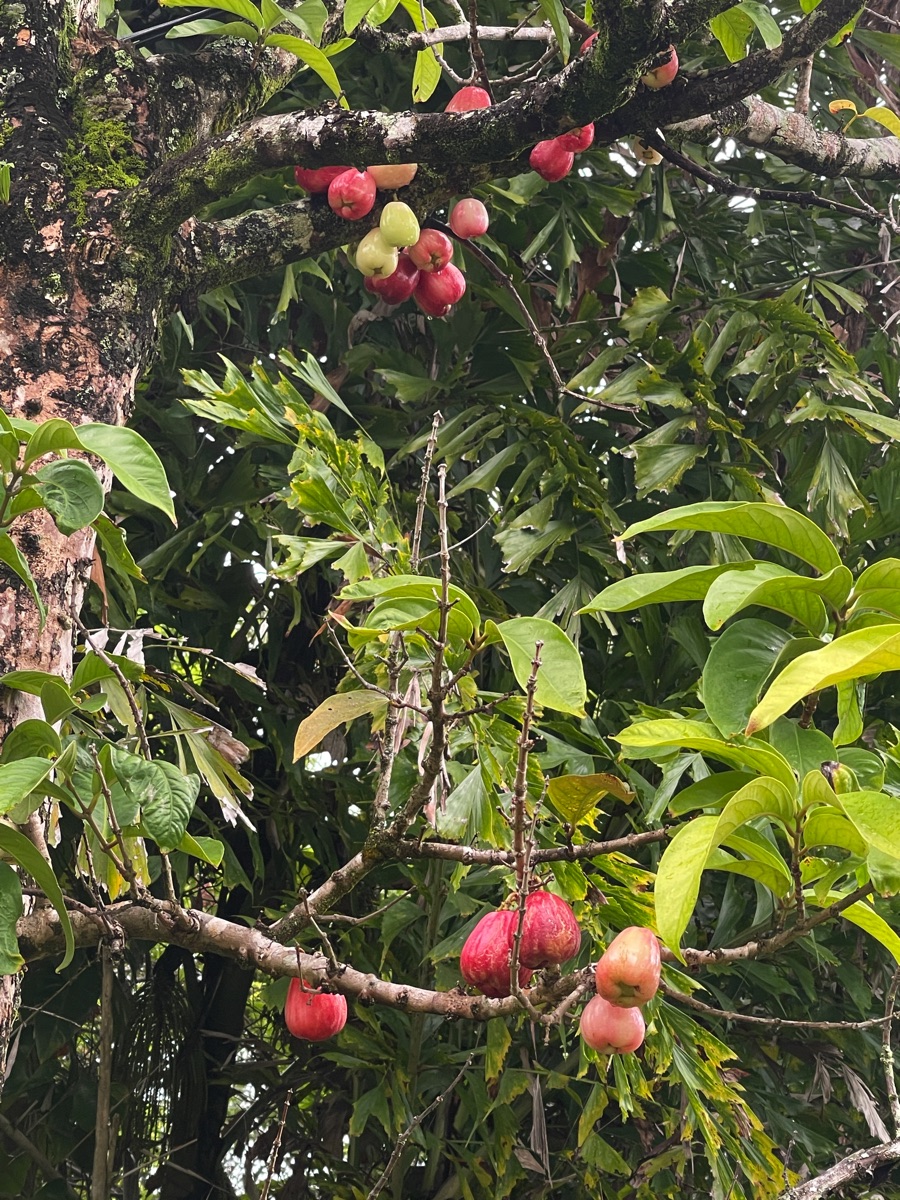
We tasted one and it was "interesting".
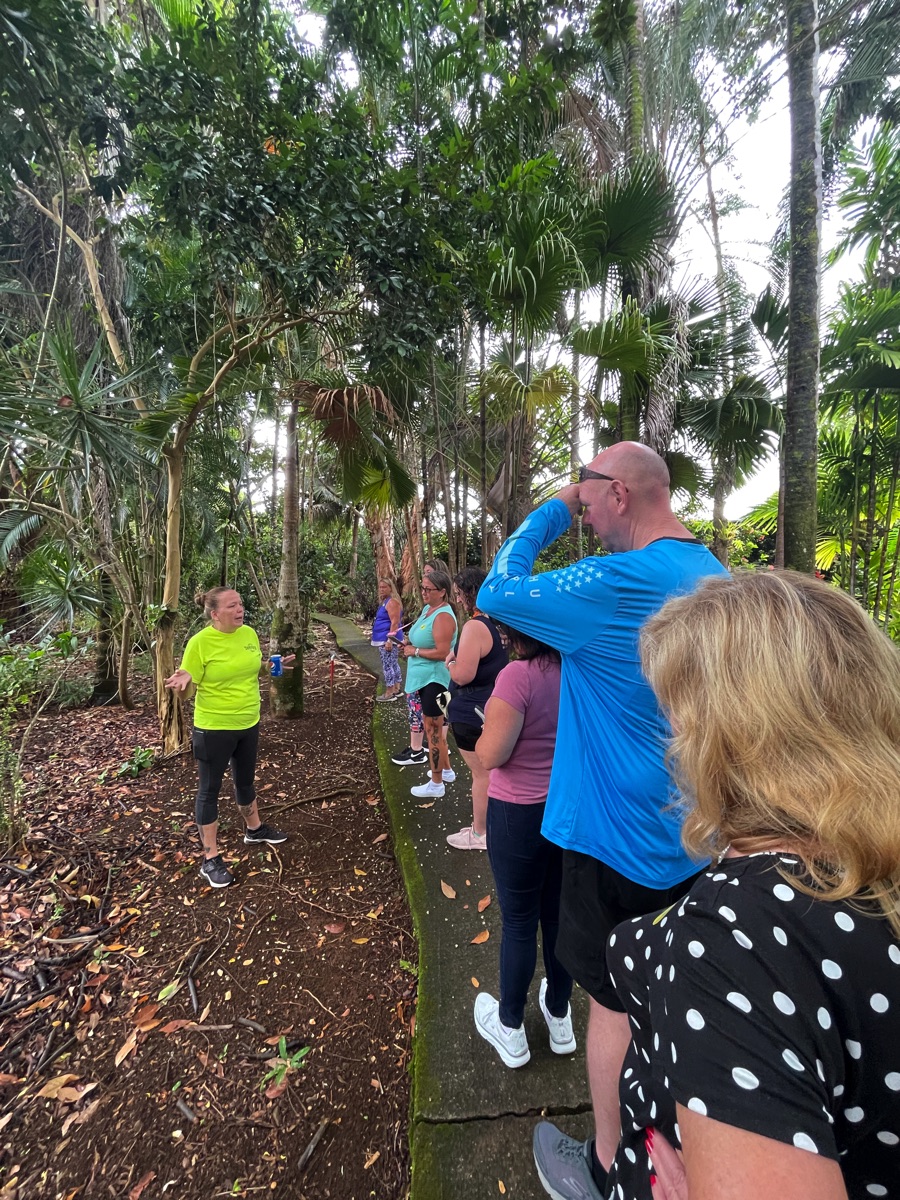
Our guide knew her stuff!
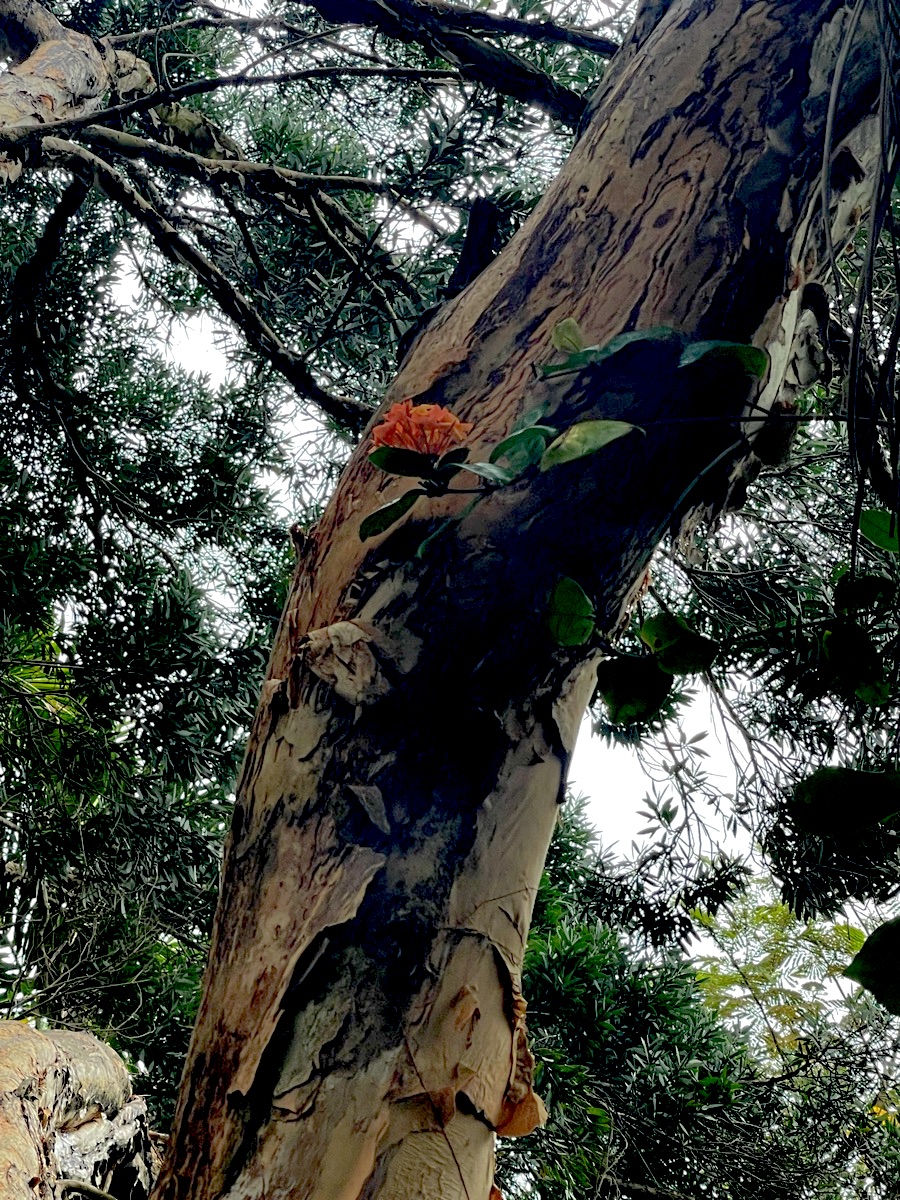
Orchids grew in the trees.

Mary knocks the balsa wood trees. They are indeed soft.
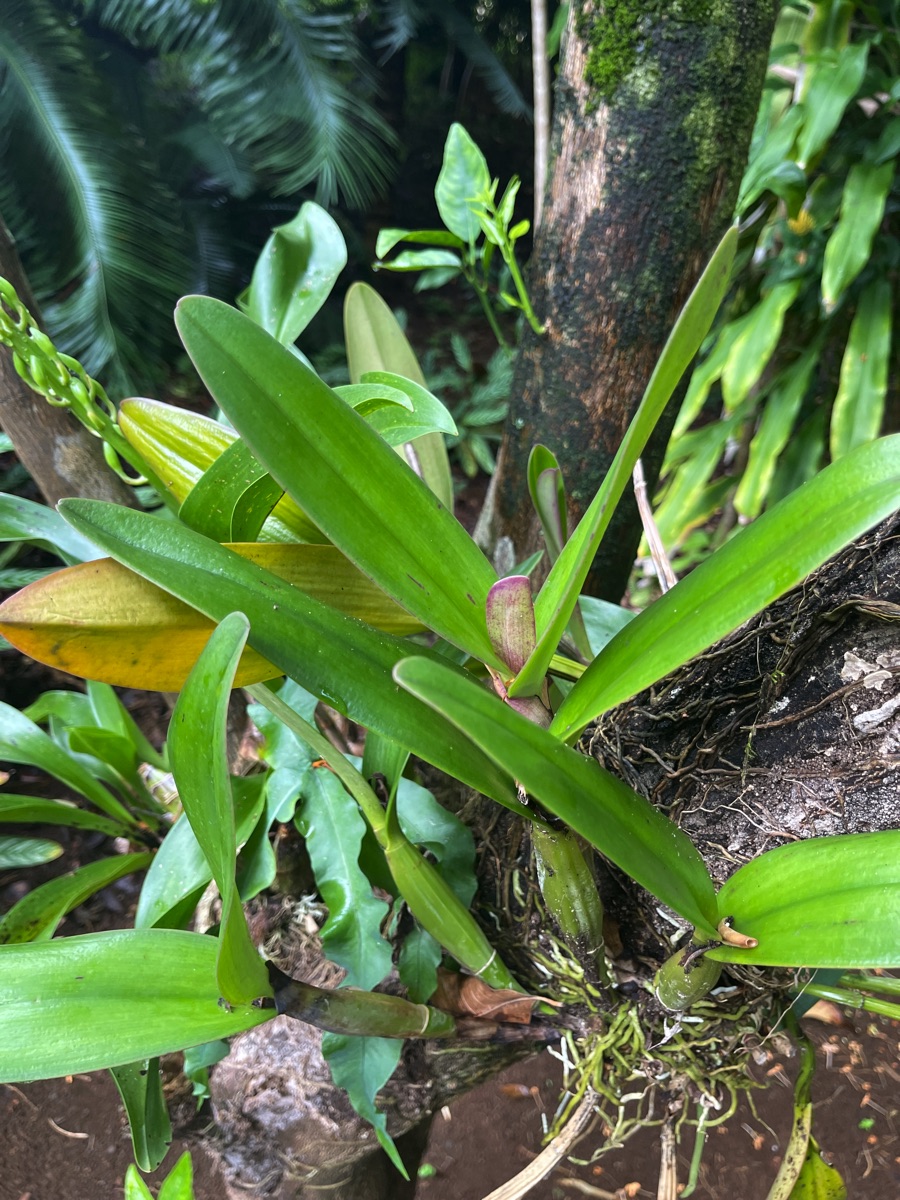
Flowers everywhere.
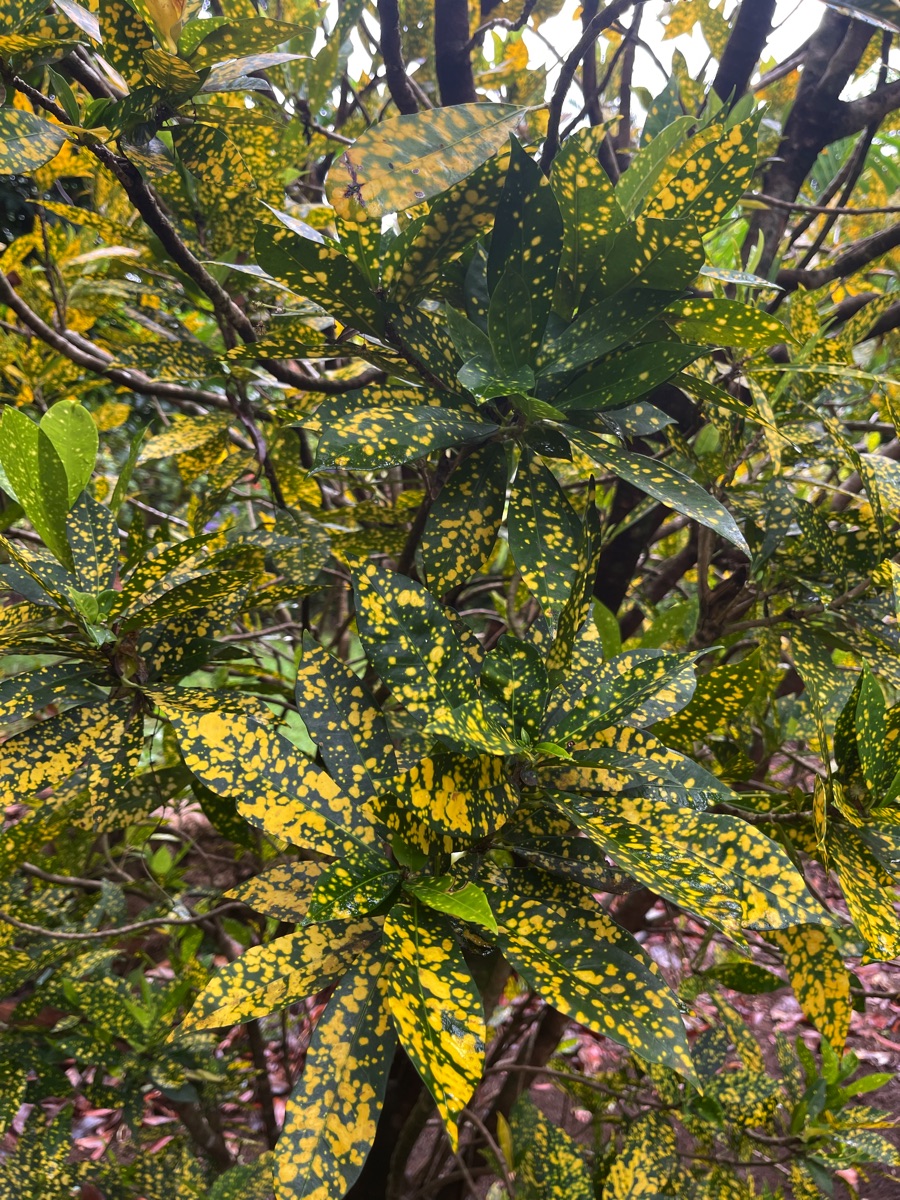
Very interesting colors
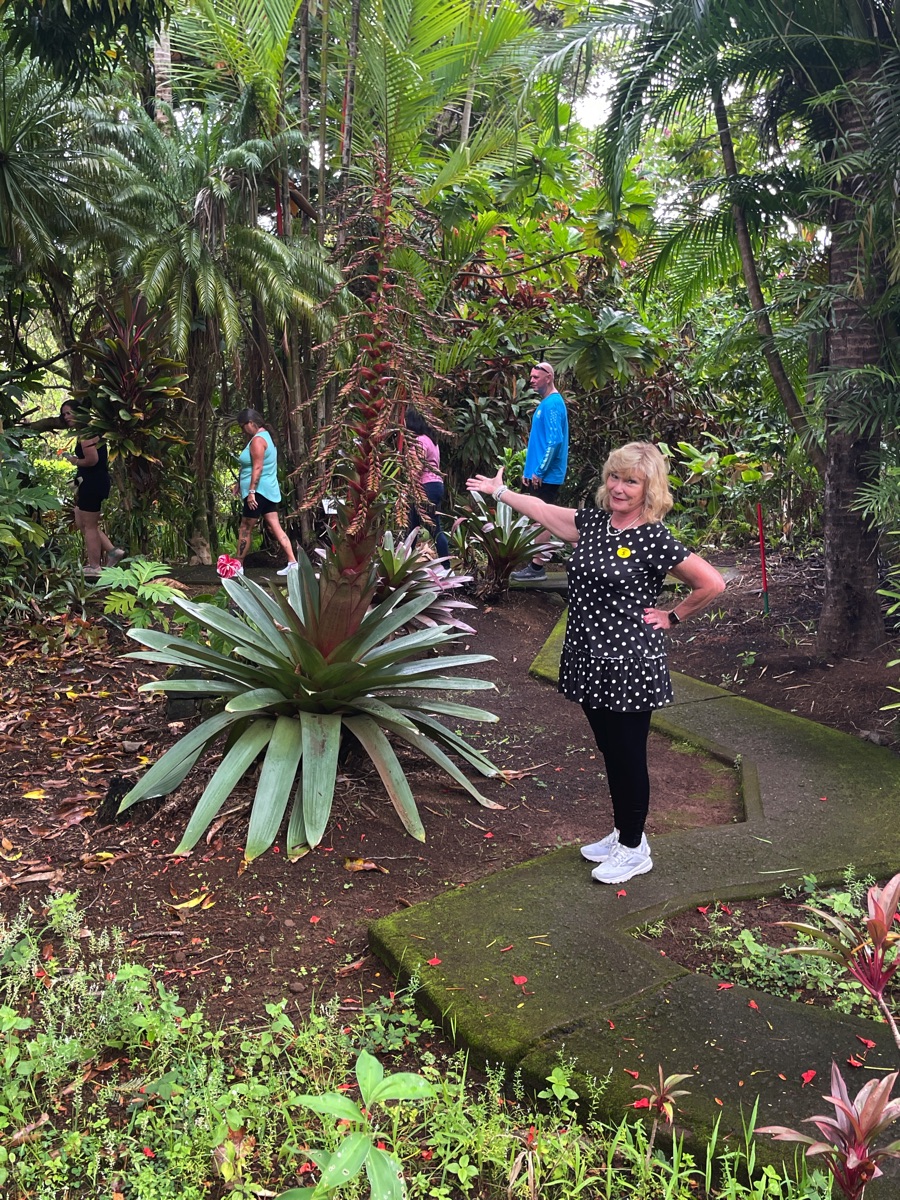
Mary (doing a Vanna White) becomes the guide! I would follow her anywhere.
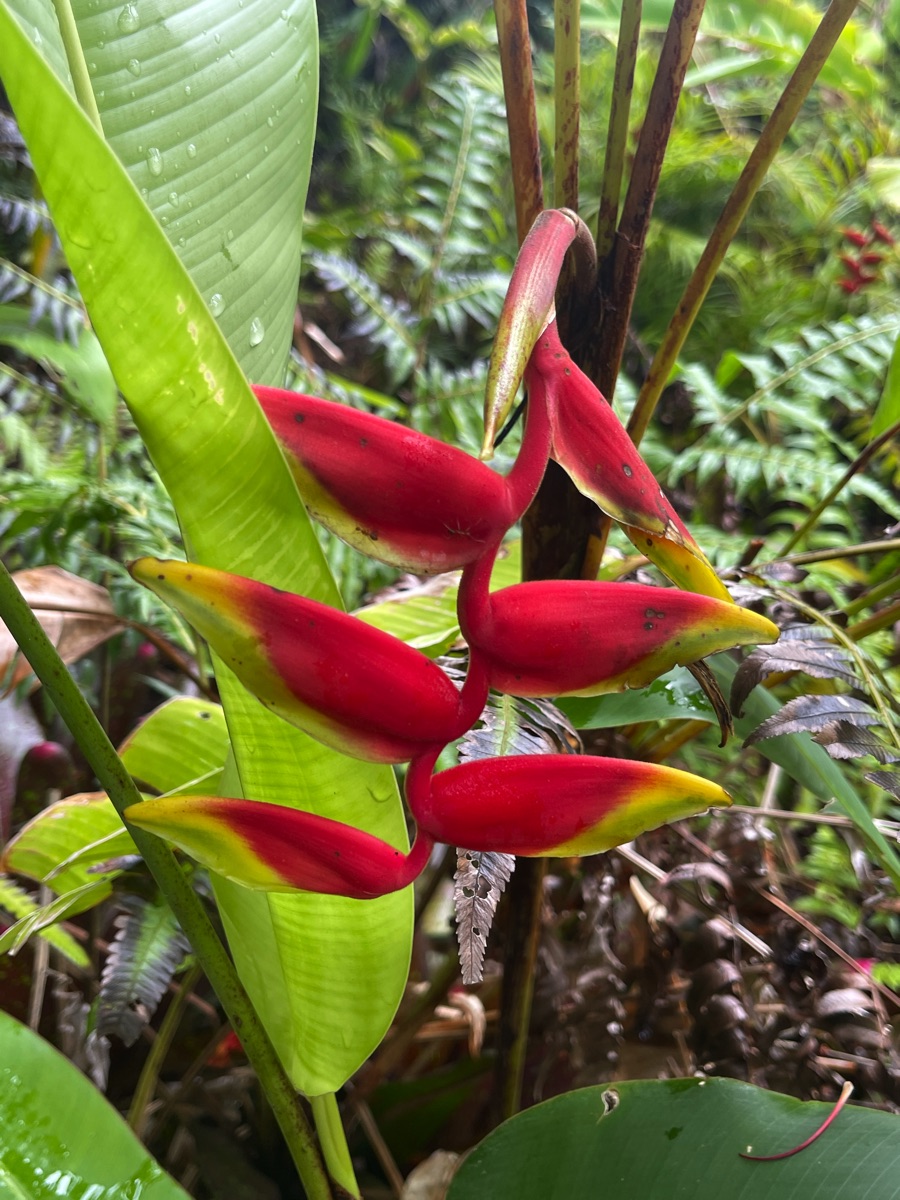
Absolutely beautiful. They look like they could fly away!
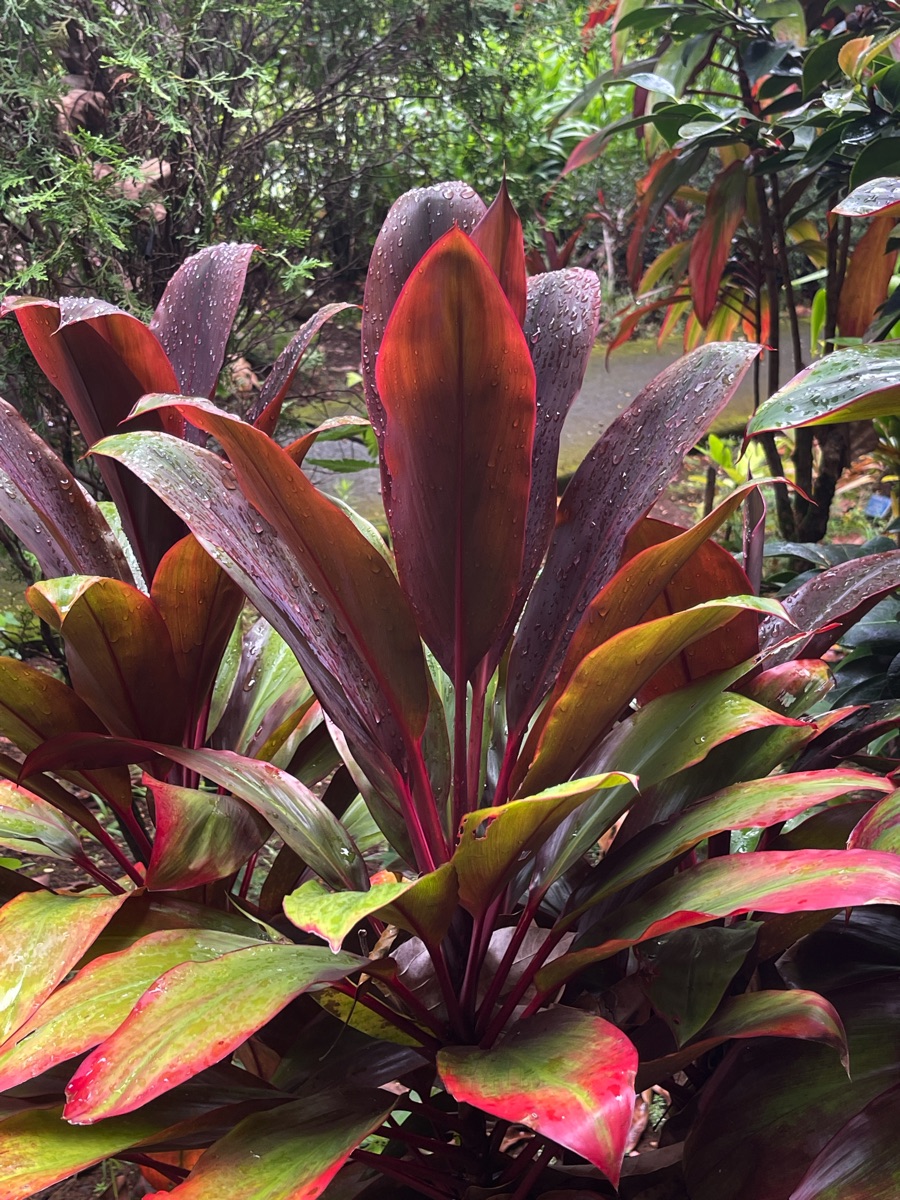
You can tell it rained a little earlier.
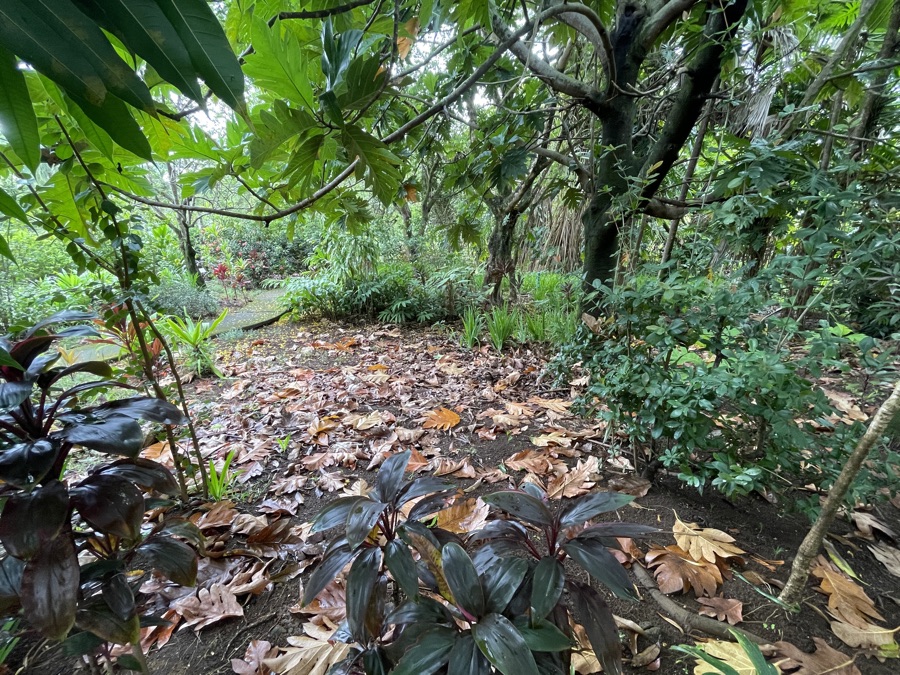
We could walk off the path if we wanted to.
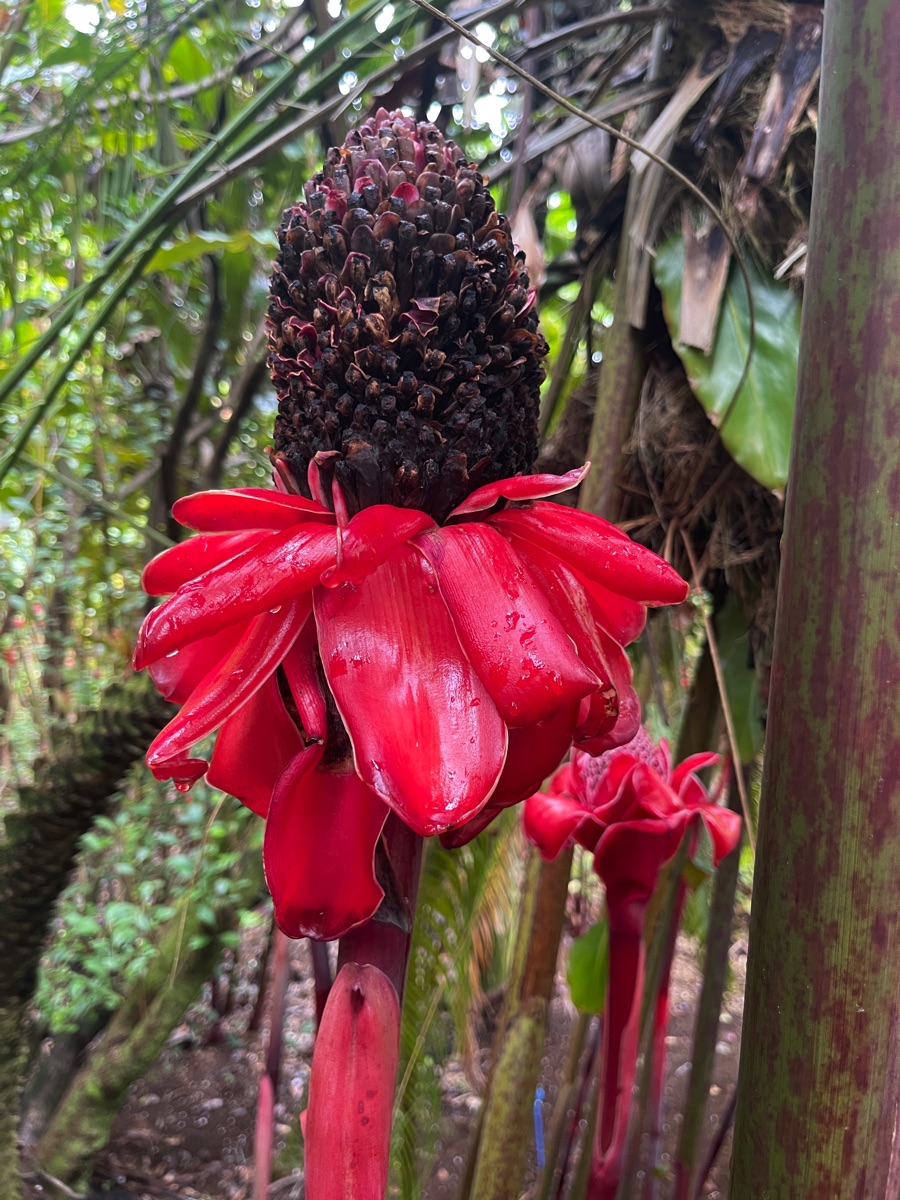
Wow! The seeds are edible but you have to work at it.
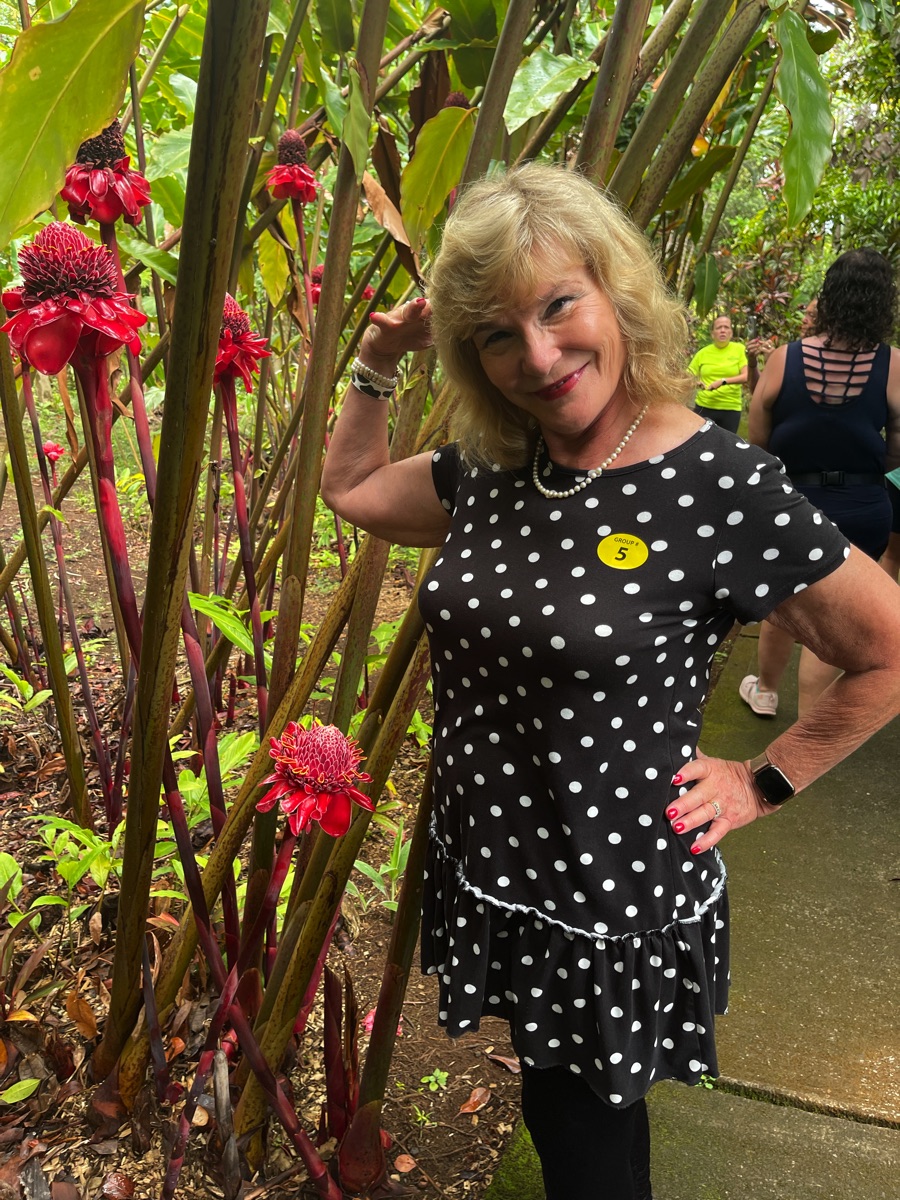
She loved the red colors.
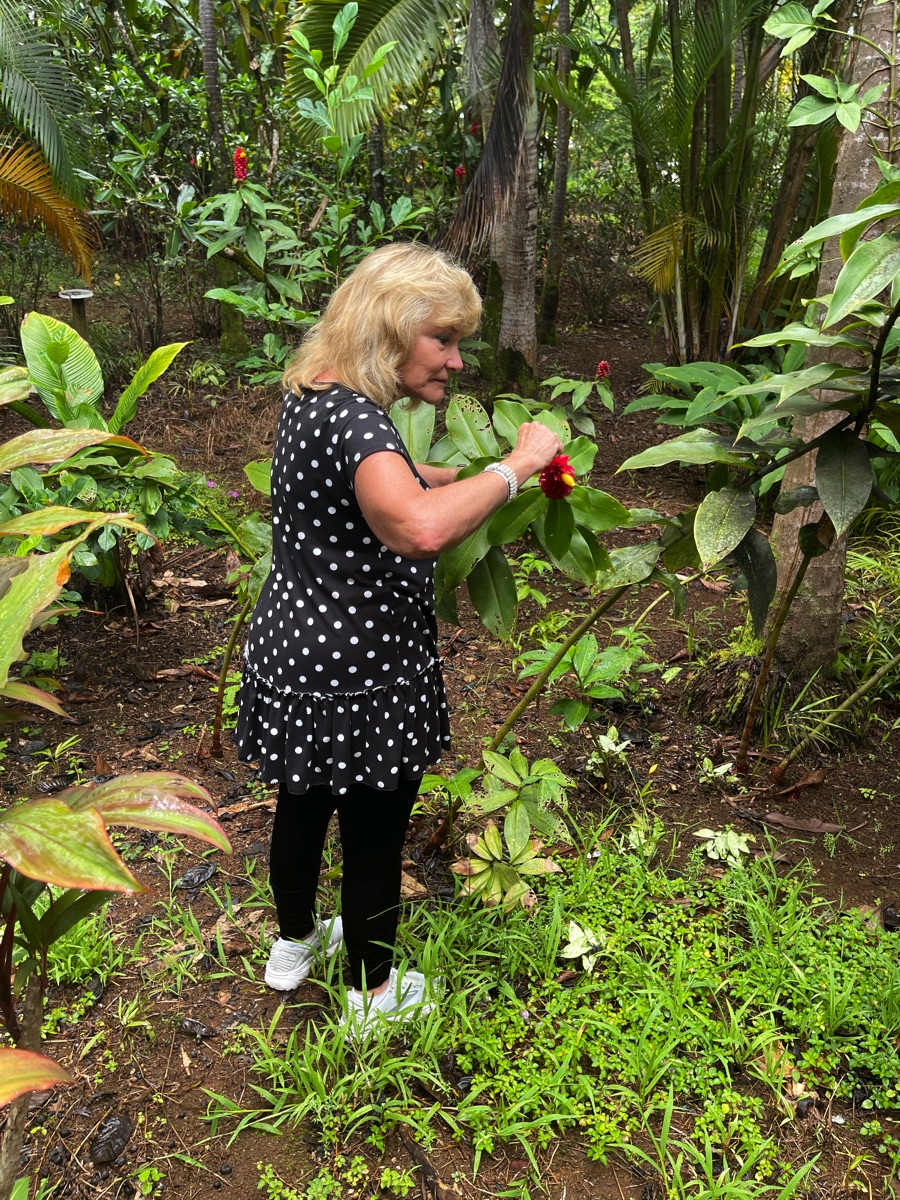
What did they smell like?
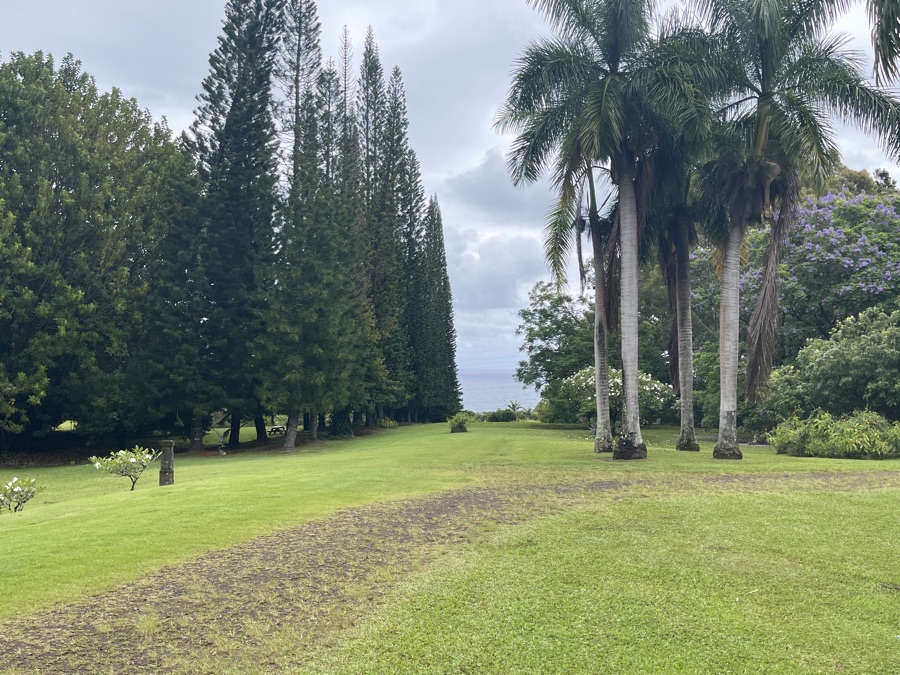
The ocean was just a mile away.
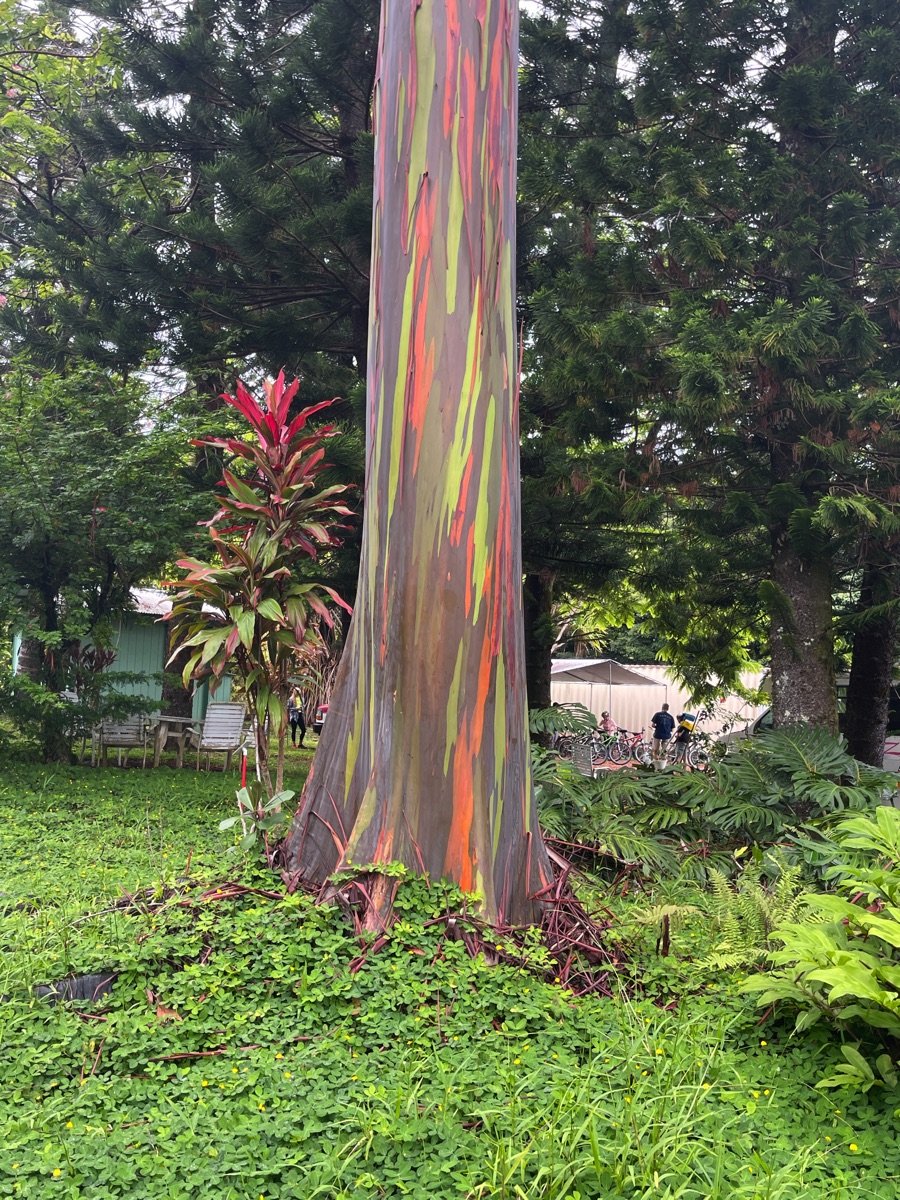
Rainbow Eucalyptus!
Once you cut through those peeling layers of tree bark, rainbow eucalyptus wood looks about the same as any other eucalyptus wood. That doesn't make this tree any less extraordinary, though.
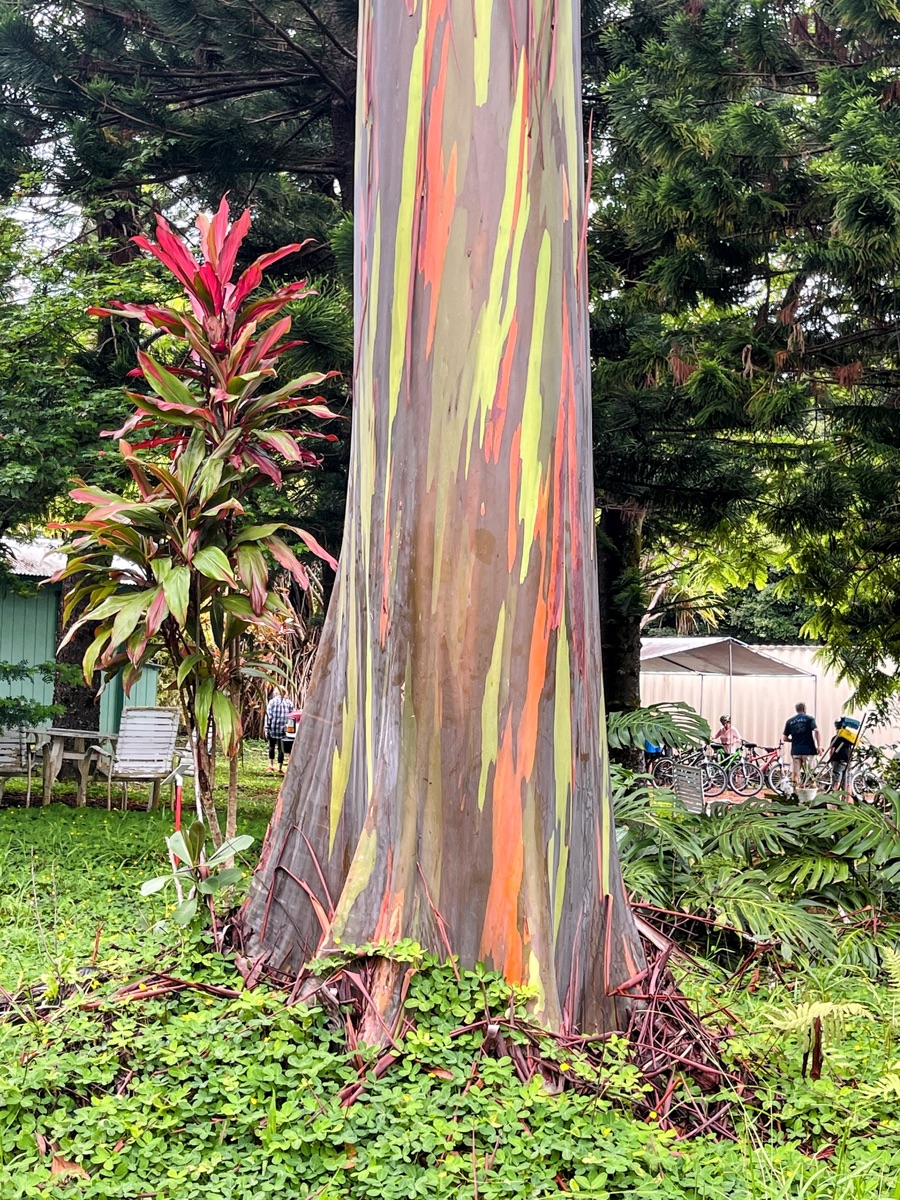
Downright magical!

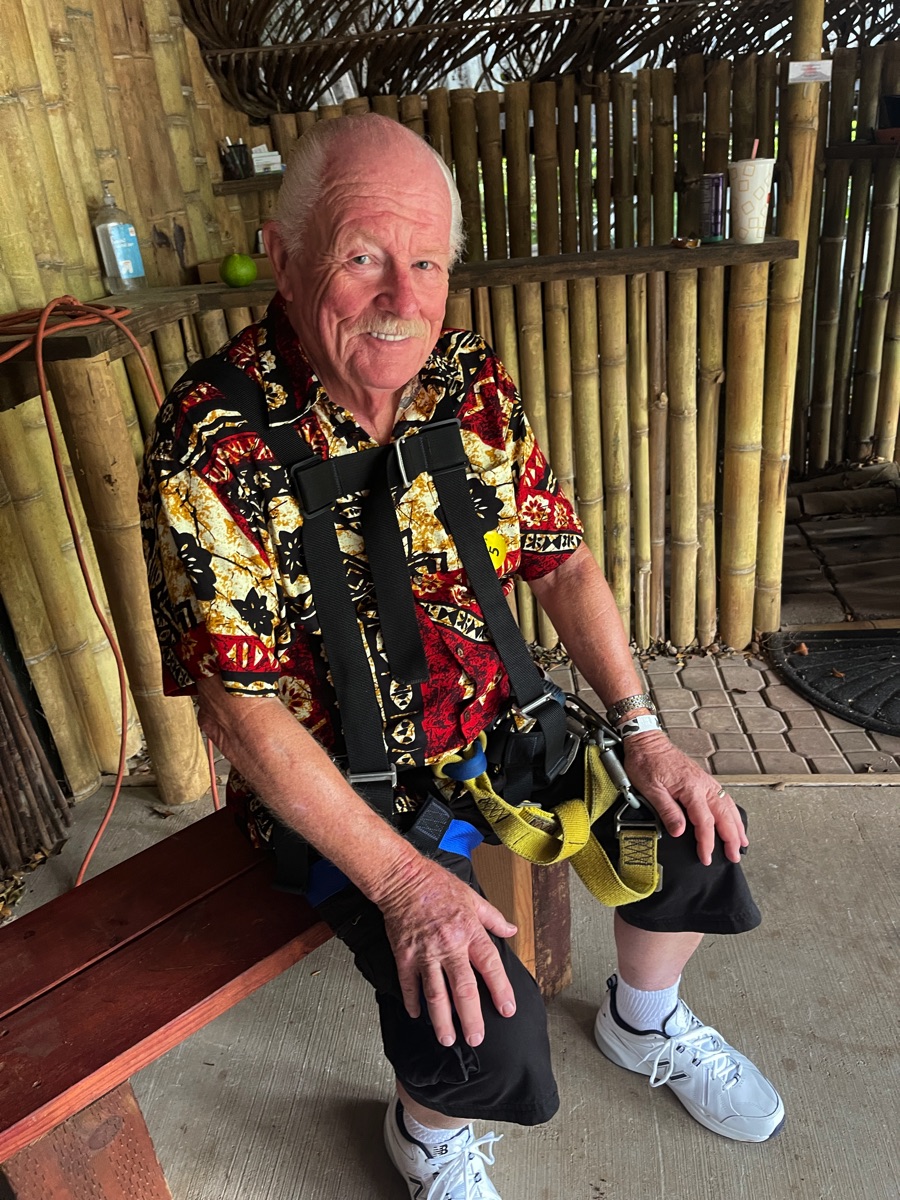
She has got me doing this again!
Did You Know? - Ropeways or aerial cables have been used as a method of transport in some mountainous countries for more than 2,000 years, possibly starting in China, India and Japan as early as 250 BC, remaining in use in some remote areas in China such as Nujiang (Salween) valley in Yunnan as late as 2015 before being replaced by bridges. Not all of these structures were assisted by gravity, so not all fitted the definition of the zip-line.
Various technological advances in Europe in the Middle Ages improved the power-line's ropeways, some of which were still assisted by gravity.
The first recorded use of the zip-line as a form of entertainment was possibly in 1739, when Robert Cadman, a steeplejack and ropeslider, died when descending from Shrewsbury's St Mary's Church when his rope snapped.

I am ready, next comes Mary
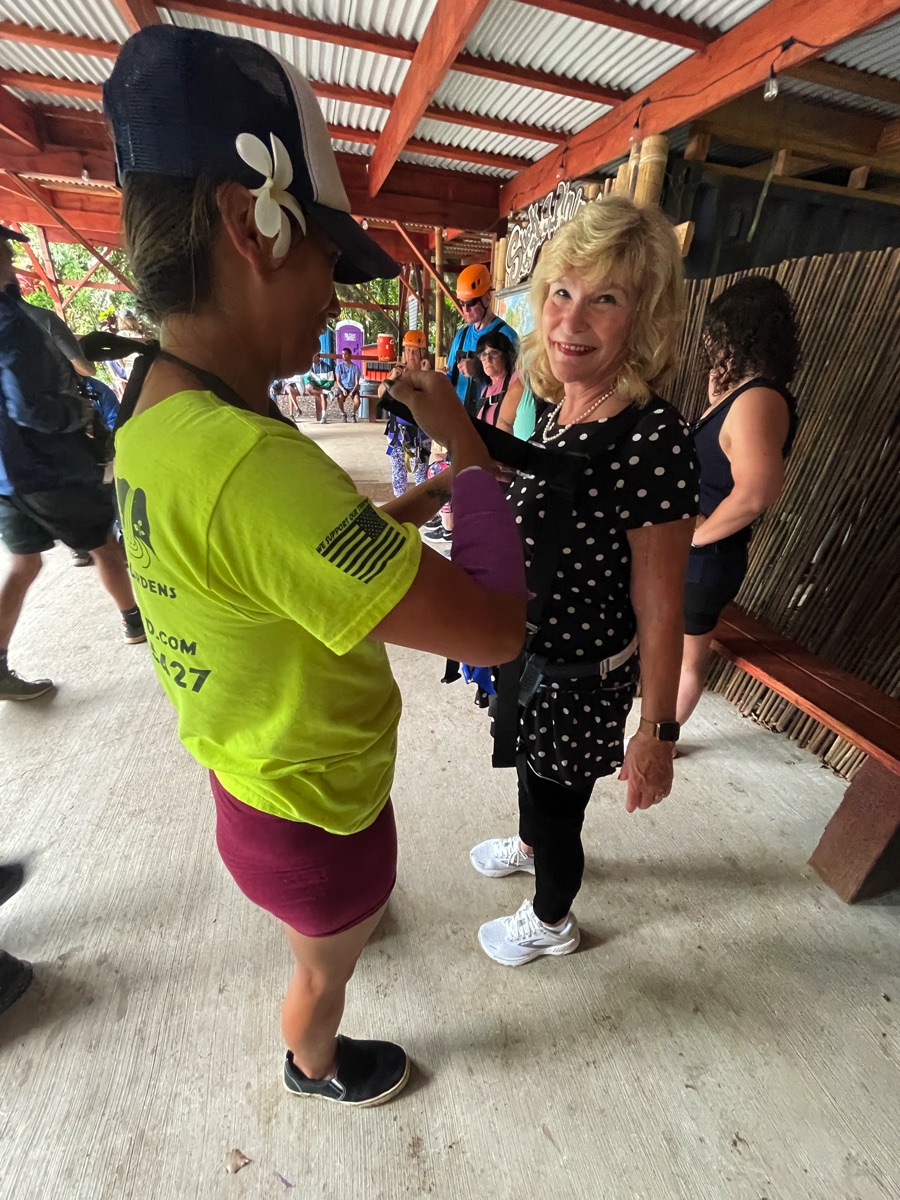
Make it tight, I do not want to lose her!

We get a lesson on where NOT to put your hands!
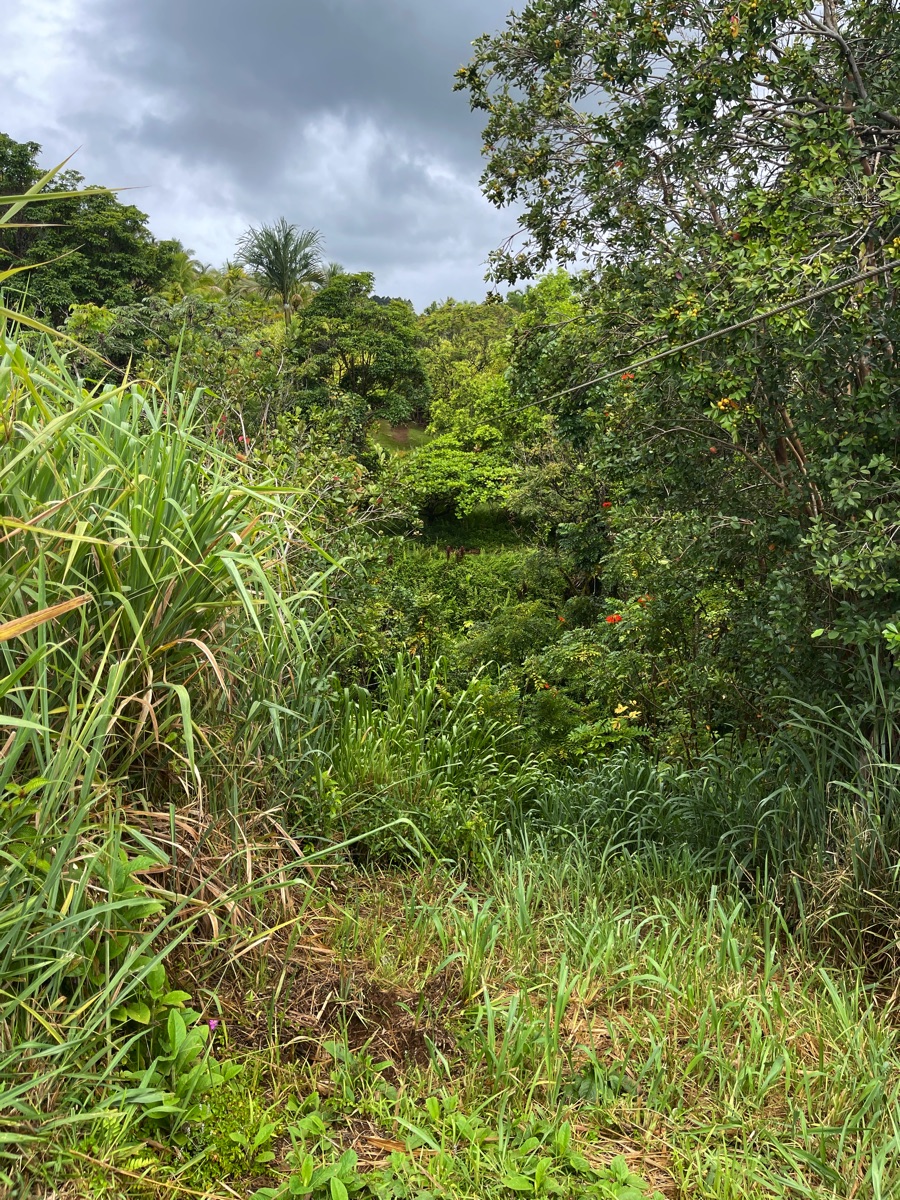
I am sure there are alligators and rattle snakes out there!
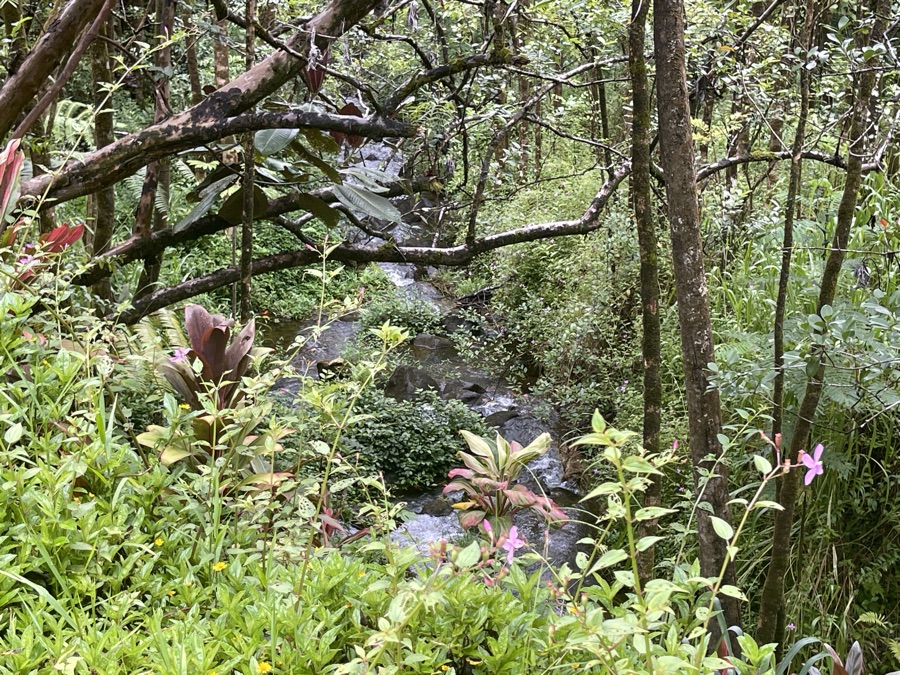
We are going to traverse the ravine and over the stream1
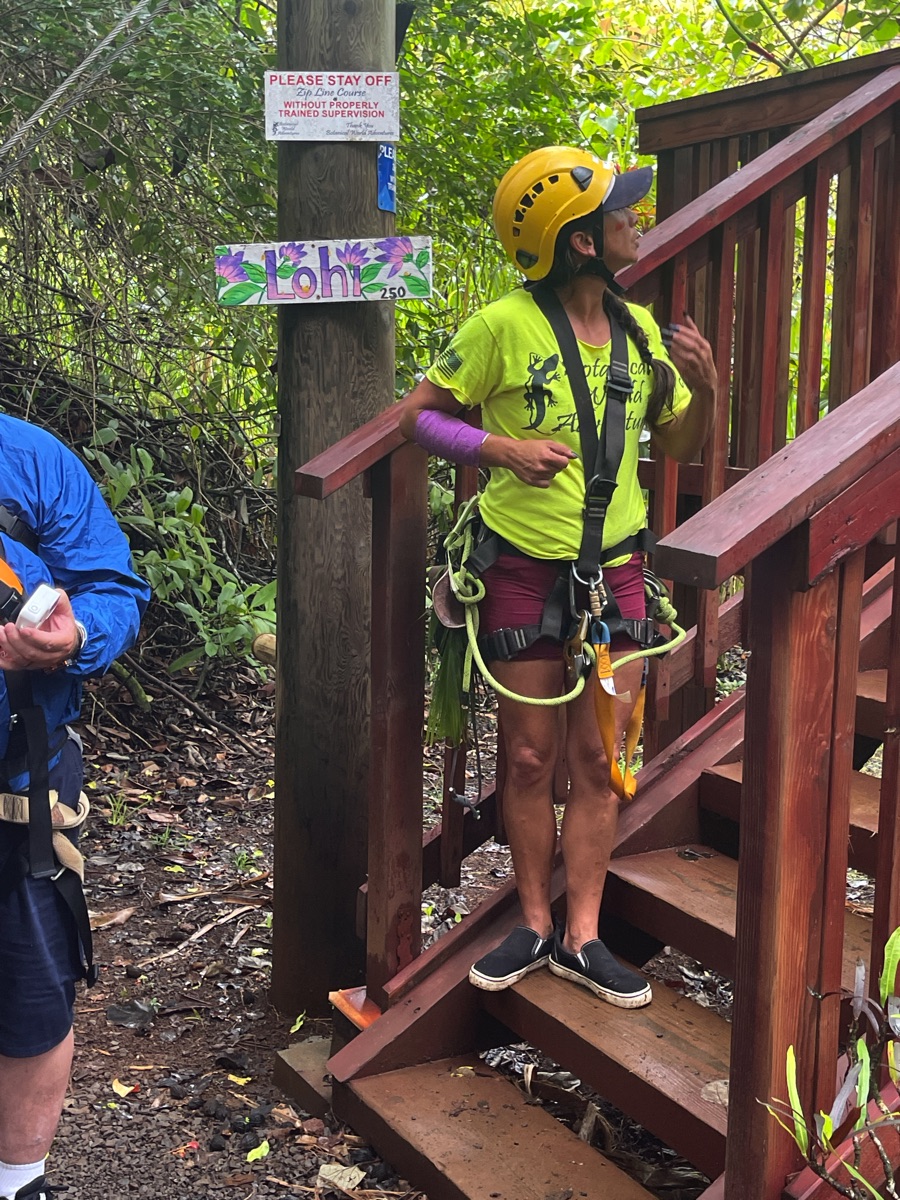
The first one is easy, 250 feet!
Each zip line had a name and the distance on a sign)
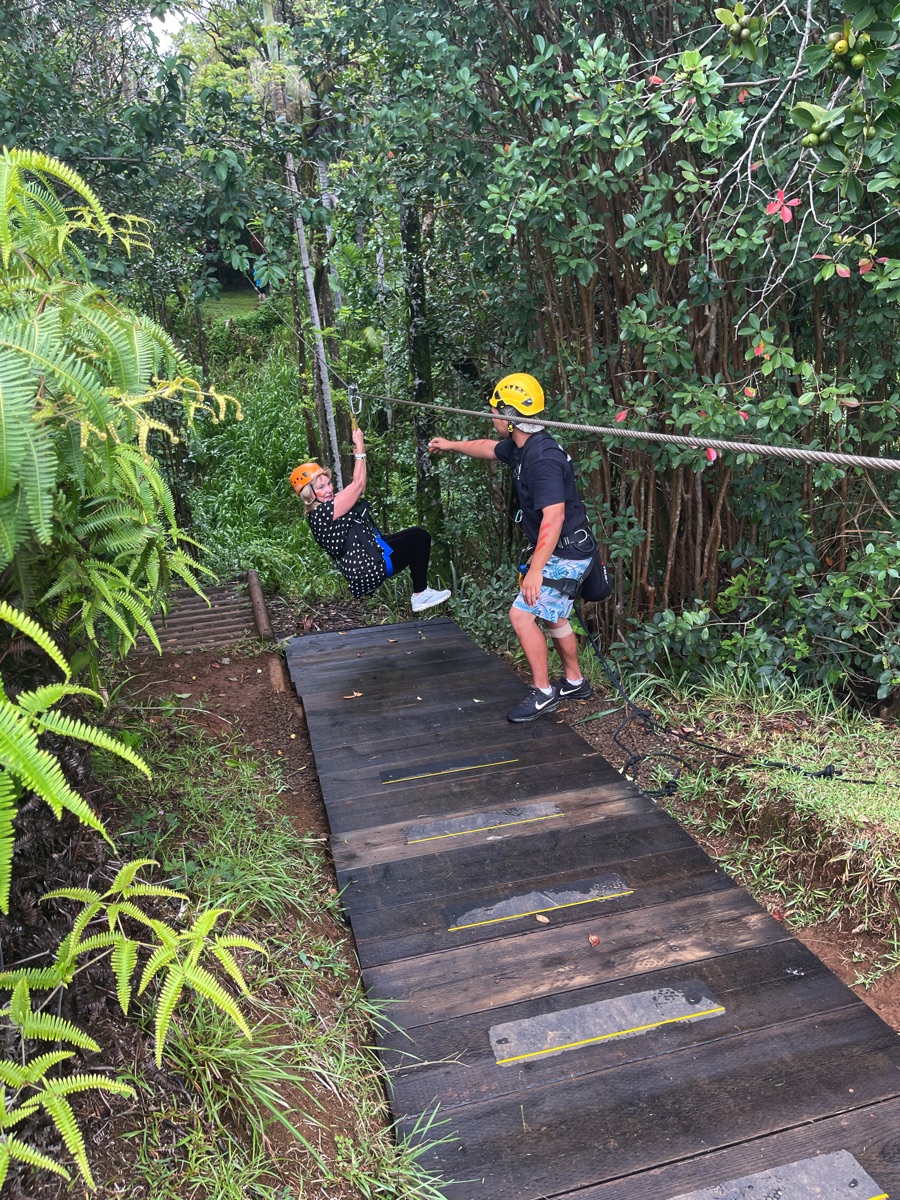
There she goes yelling "Geraldo!"
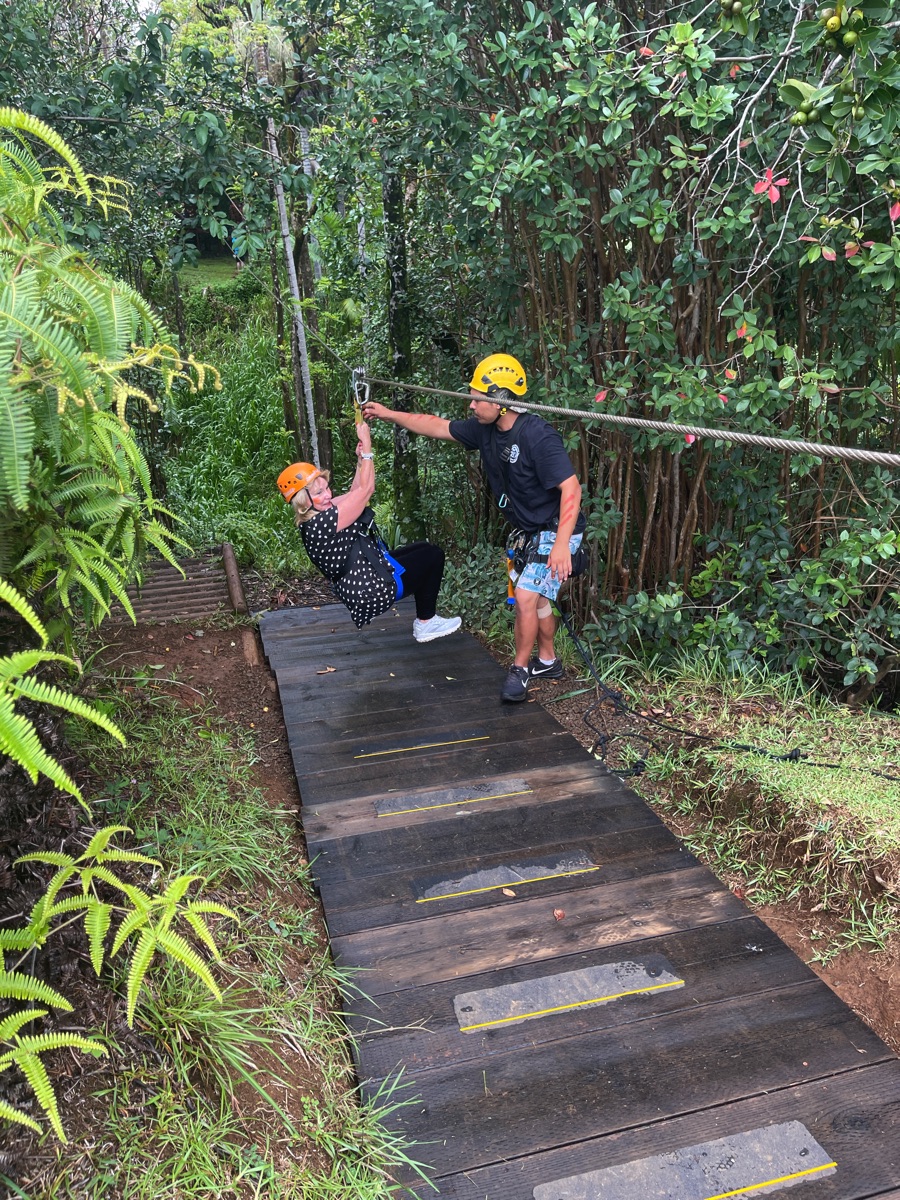
"Don't worry, someone will catch you!"
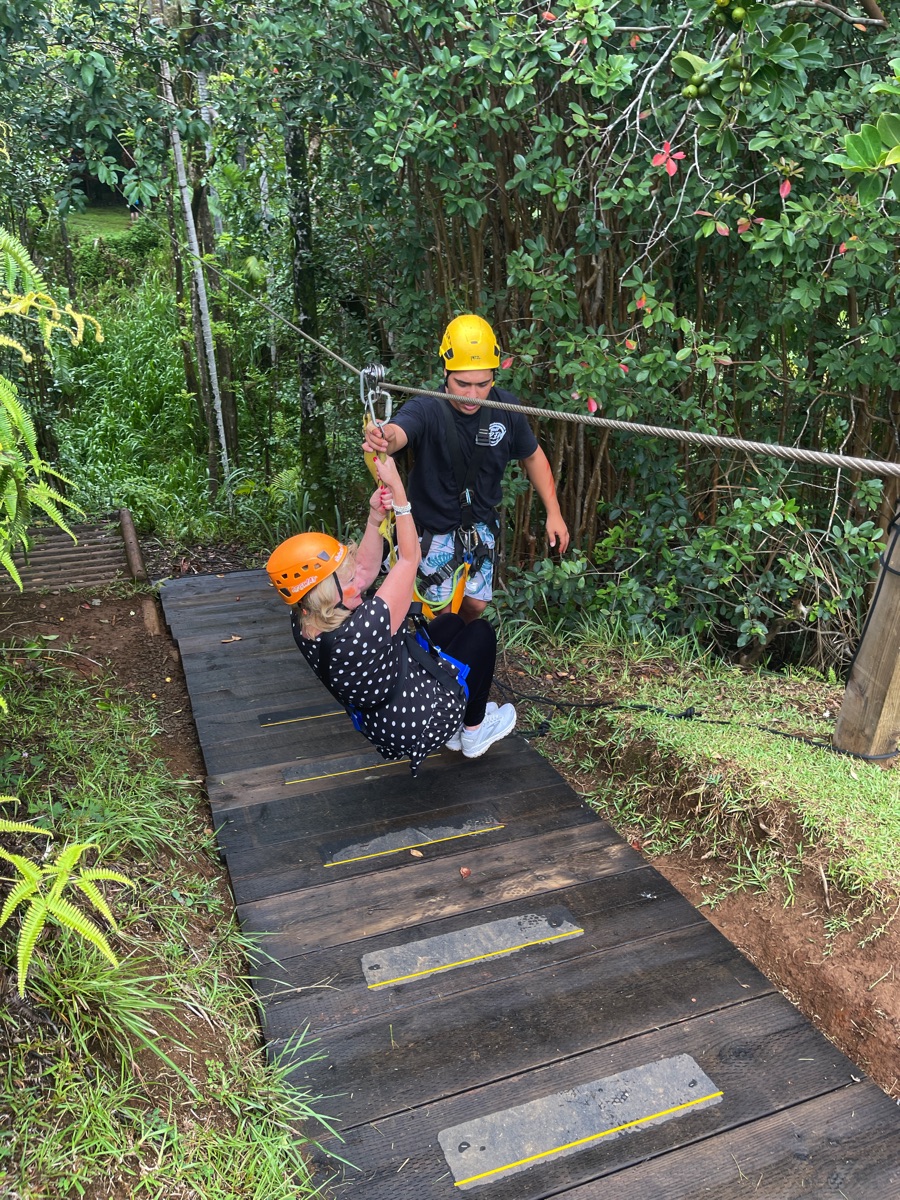
At the other end all she could hear is, "Feet up!"
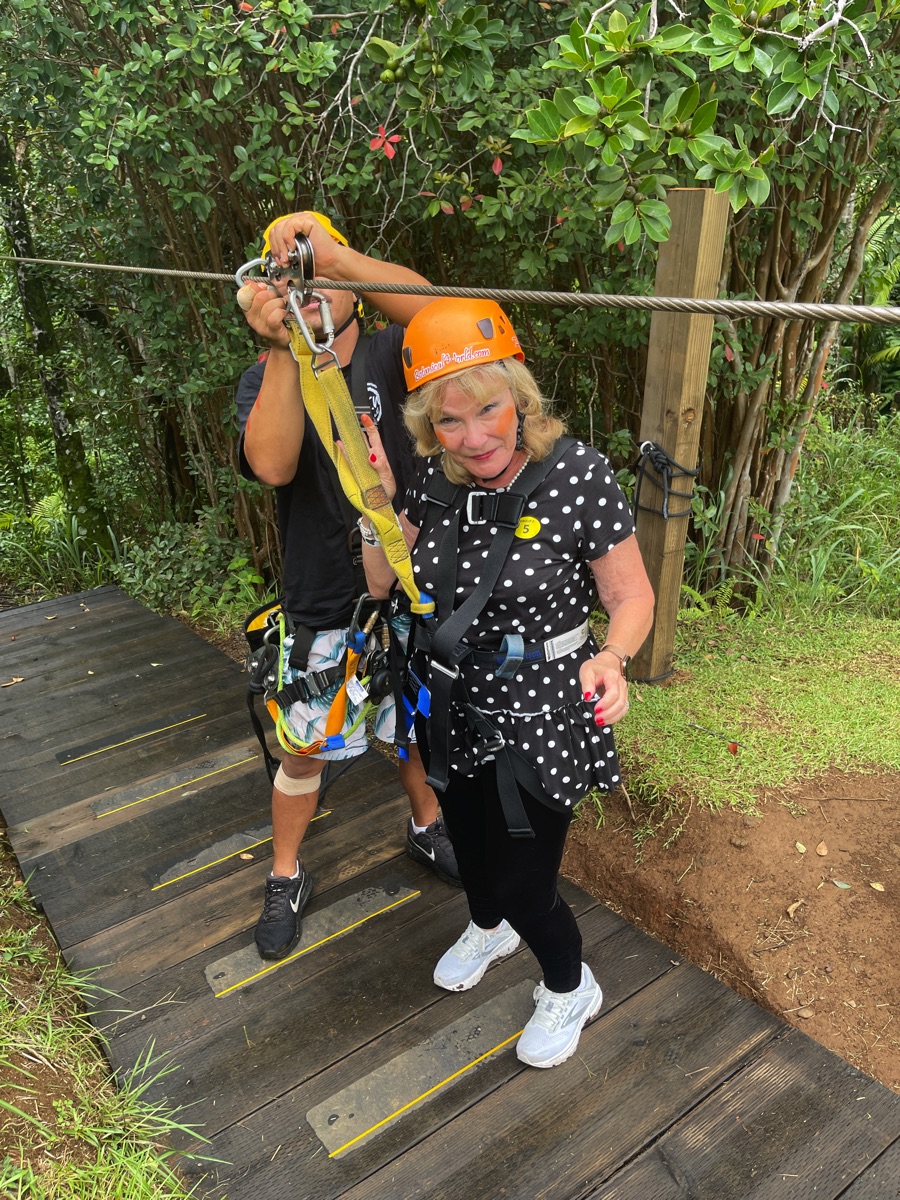
That is NOT a glow on her cheeks, it is "wild pig deterrent" (so we are told)

She made it!
When doing this we hate the word "Oops"!

OMG, I look like something out of a science fiction movie!

We are quite a pair.
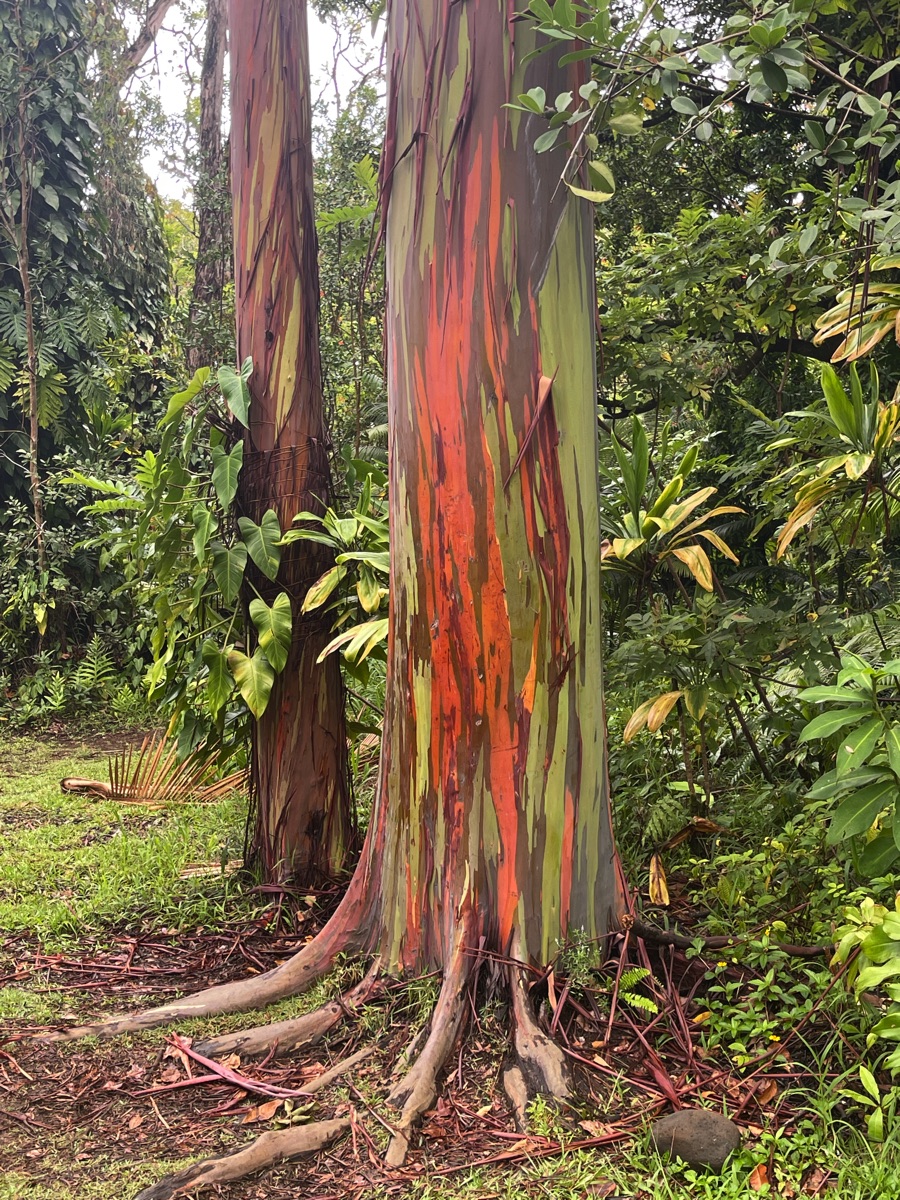
The trees are beautiful
Did You Know? - Eucalyptus deglupta is a species of tall tree, commonly known as the rainbow eucalyptus, Mindanao gum, or rainbow gum that is native to the Philippines, Indonesia, and Papua New Guinea. It is the only Eucalyptus species that usually lives in rainforest, with a natural range that extends into the Northern Hemisphere. It is characterized by multi-colored bark.
Eucalyptus deglupta is a fast-growing tree that typically reaches a height of 60–75 m (197–246 ft) with the trunk up to 240 cm (94 in) in diameter and with buttresses up to 4 m (13 ft) high. It has smooth, orange-tinted bark that sheds in strips, revealing streaks of pale green, red, orange, grey, and purplish brown.
The branchlets are roughly square in cross section, often with narrow wings on the corners. The leaves are arranged in opposite pairs, mostly 75–150 mm (3–6 in) long and 50–75 mm (2–3 in) wide on a short petiole.
The flower buds are arranged in a branching inflorescence in leaf axils, or on the end of branchlets, each branch with groups of seven buds, the individual buds on a pedicel about 5 mm (3⁄16 in) long.
Mature buds are pale green or cream-colored, roughly spherical in shape and 2–5 mm (1⁄16–3⁄16 in) in diameter with a hemispherical operculum with a small point on the top.
Flowering time depends on location, and the stamens that give the flowers their colour are white and pale yellow.
The fruit is a woody, brown, hemispherical capsule about 3–5 mm (1⁄8–3⁄16 in) long and wide, with three or four valves extending beyond the rim of the fruit. Each cell of the fruit contains between three and twelve minute brown seeds, each with a small wing.
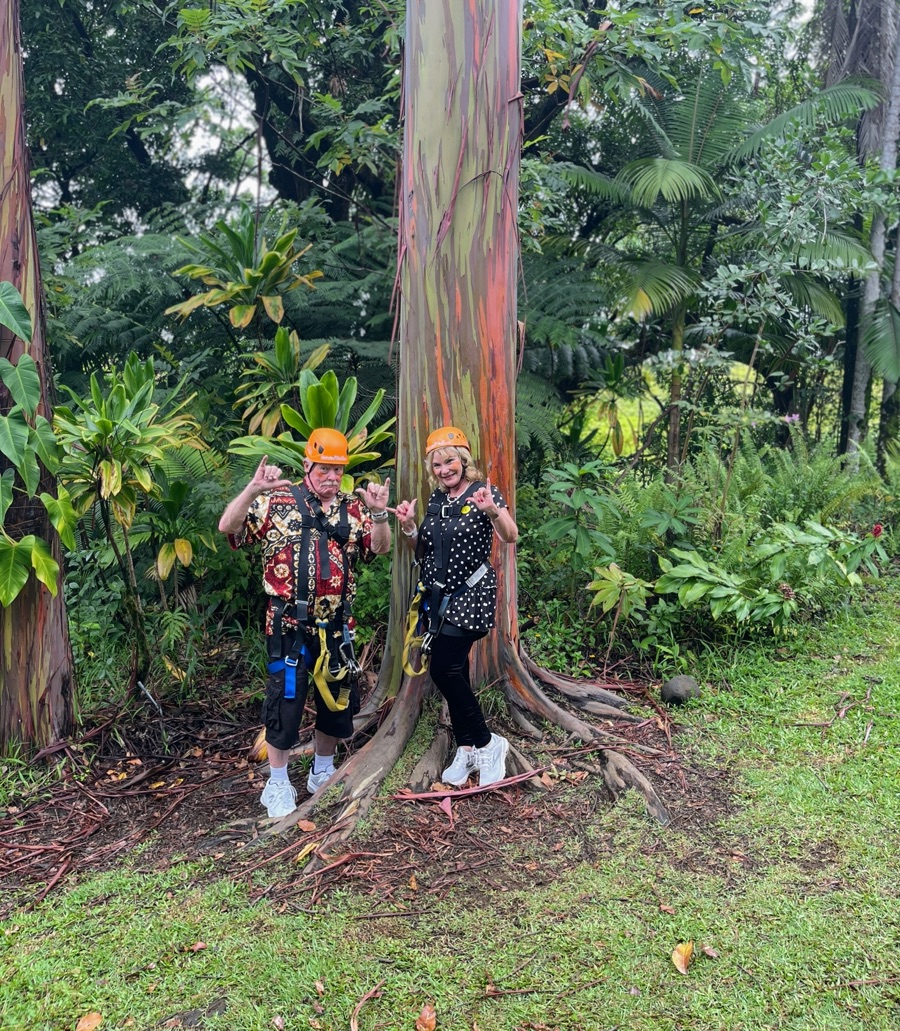
The trees are rather large.
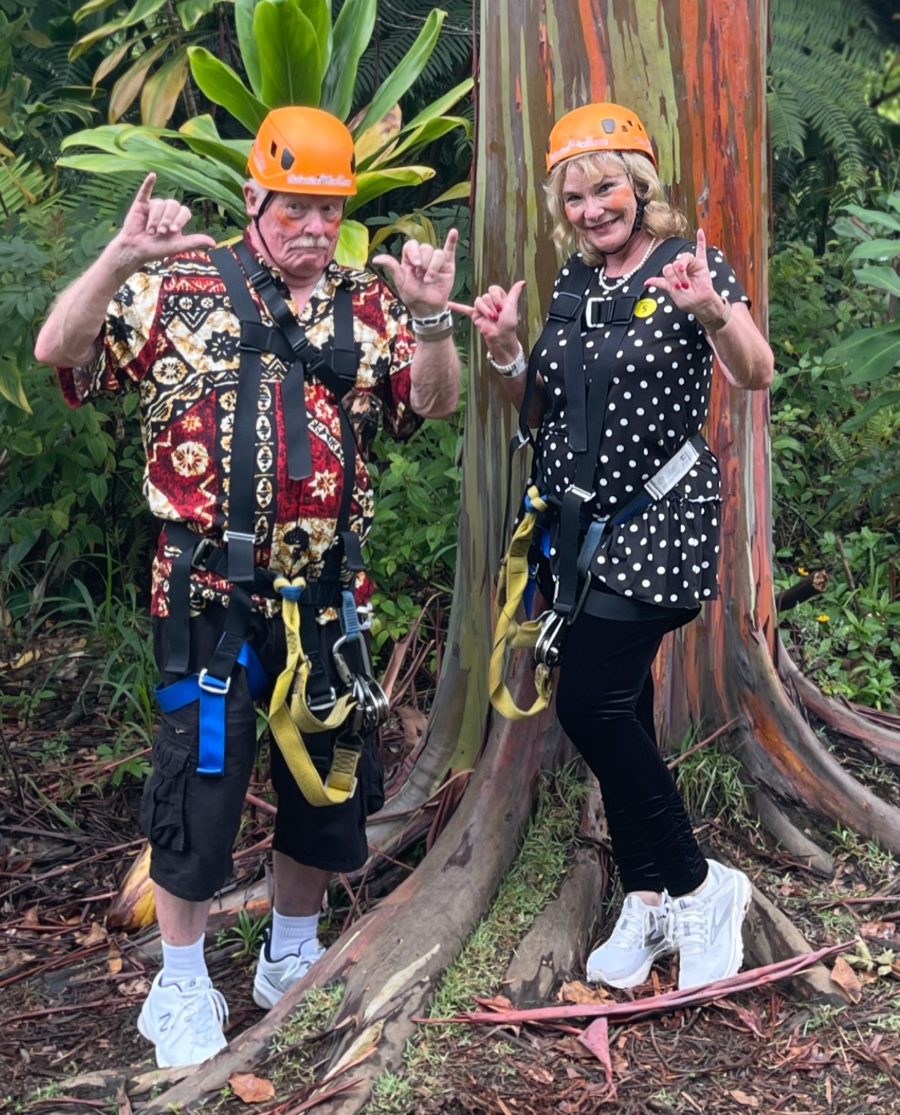
The secret hand signal!

The wild mangoes were everywhere.
Did You Know? - Mangoes are a sacred fruit?!Mangos orginated in Southeast Asia and India, where references to the fruit are documented in Hindu writings dating back to 4000 B.C. Buddhist monks cultivated the fruit and in fact, the mango is considered to be a sacred fruit in the region because is is said that Buddha himself meditated under a mango tree.

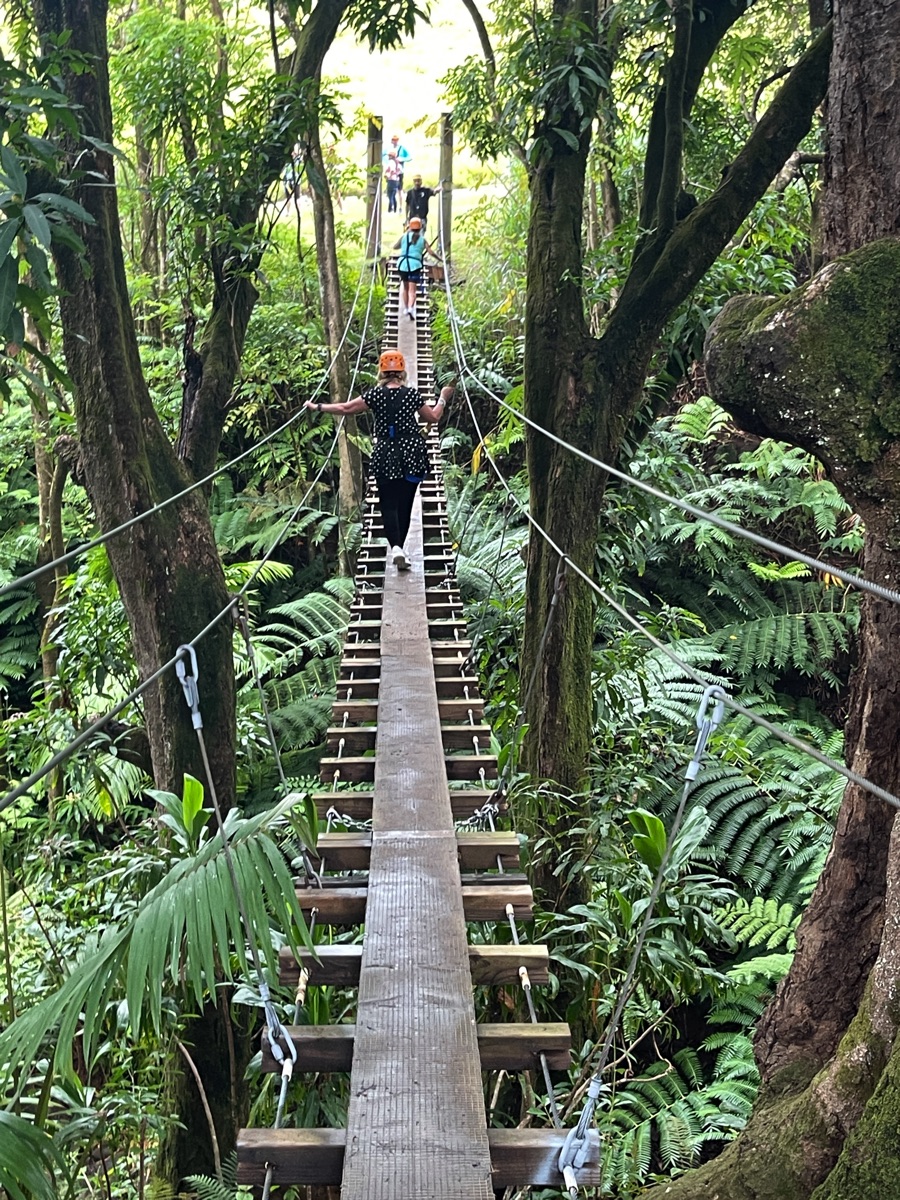
Not to worry, the weight limit is 120 pounds!
Did You Know? - A simple suspension bridge (also rope bridge, swing bridge (in New Zealand), suspended bridge, hanging bridge and catenary bridge) is a primitive type of bridge in which the deck of the bridge lies on two parallel load-bearing cables that are anchored at either end. They have no towers or piers. The cables follow a shallow downward catenary arc which moves in response to dynamic loads on the bridge deck.
The arc of the deck and its large movement under load make such bridges unsuitable for vehicular traffic. Simple suspension bridges are restricted in their use to foot traffic. For safety, they are built with stout handrail cables, supported on short piers at each end, and running parallel to the load-bearing cables.
Sometime these may be the primary load-bearing element, with the deck suspended below. Simple suspension bridges are considered the most efficient and sustainable design in rural regions, especially for river crossings that lie in non-floodplain topography such as gorges.
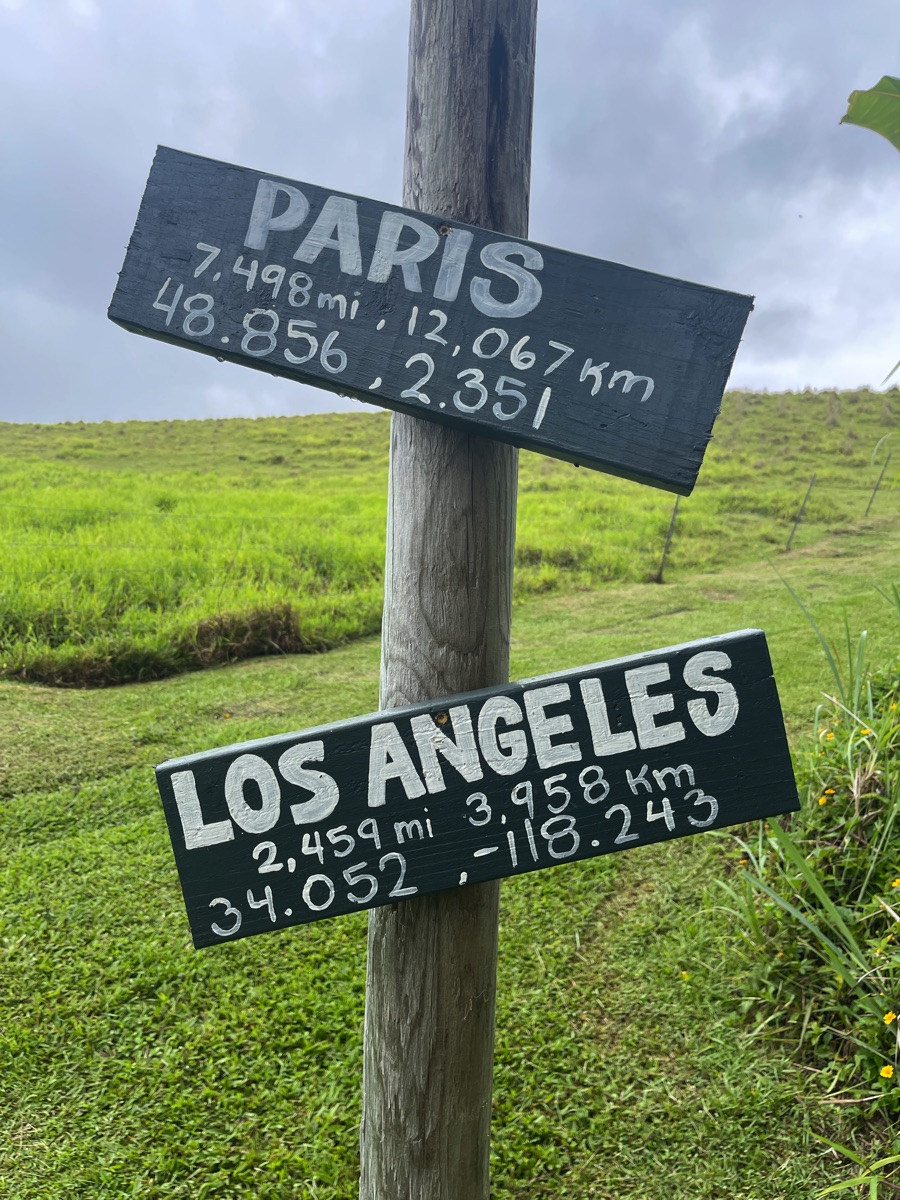
Time for some humor!
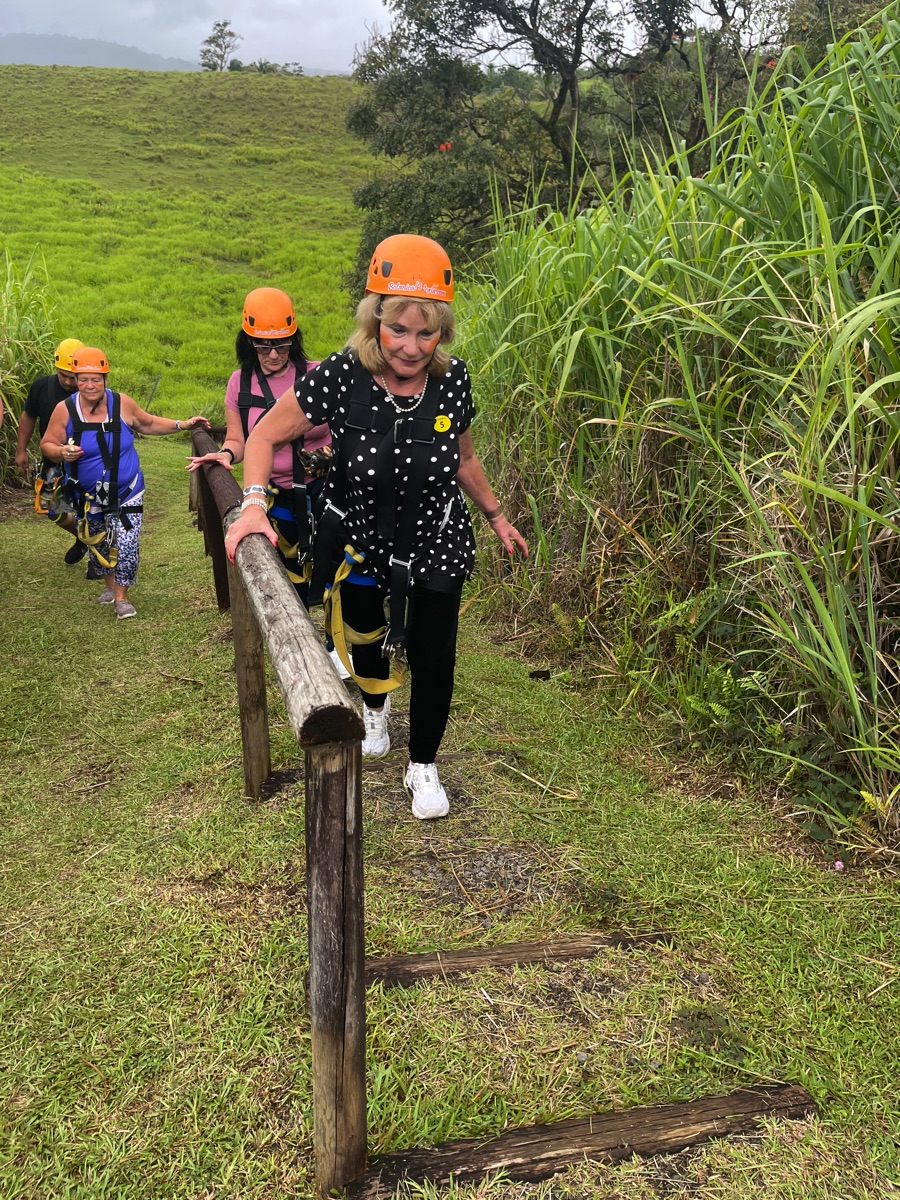
Sometimes we had to walk between the lines!
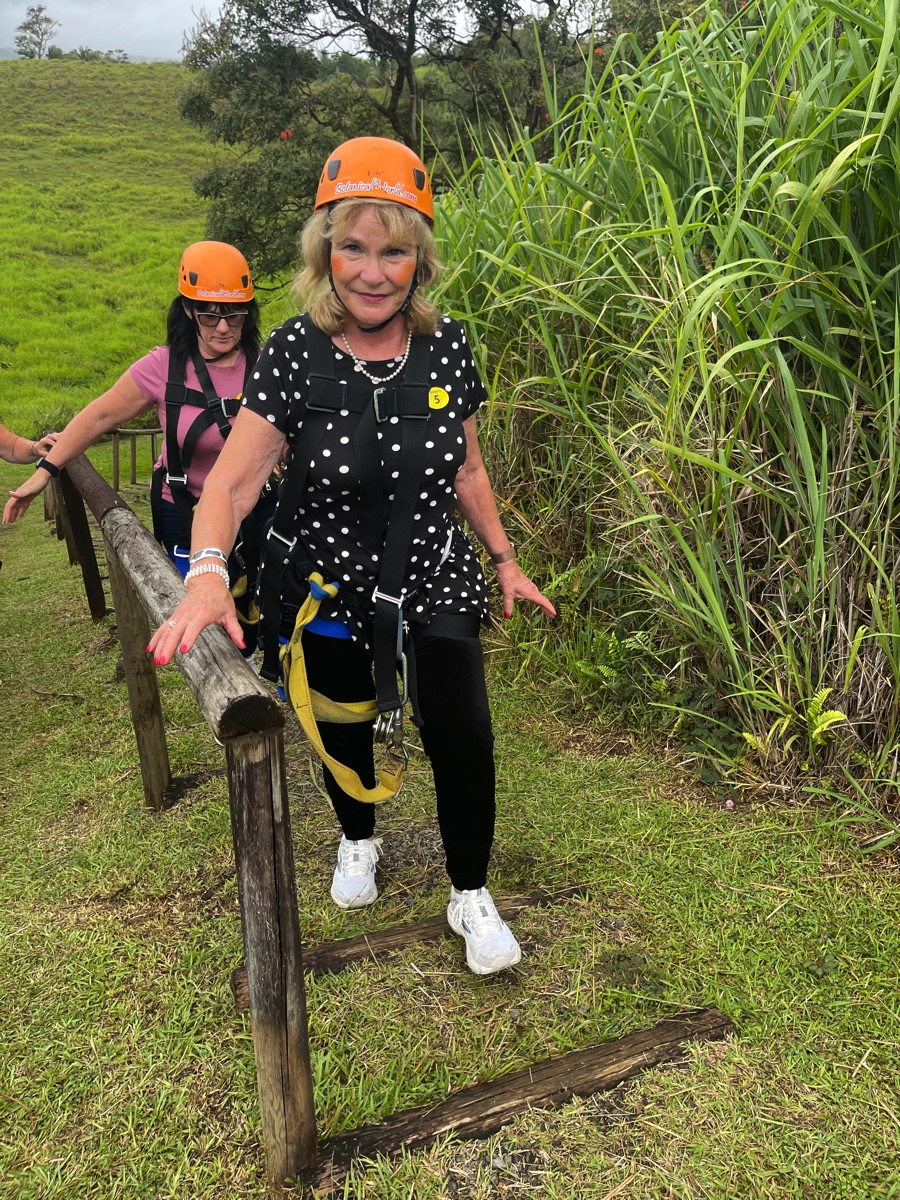
The pig repellent seems to be working!
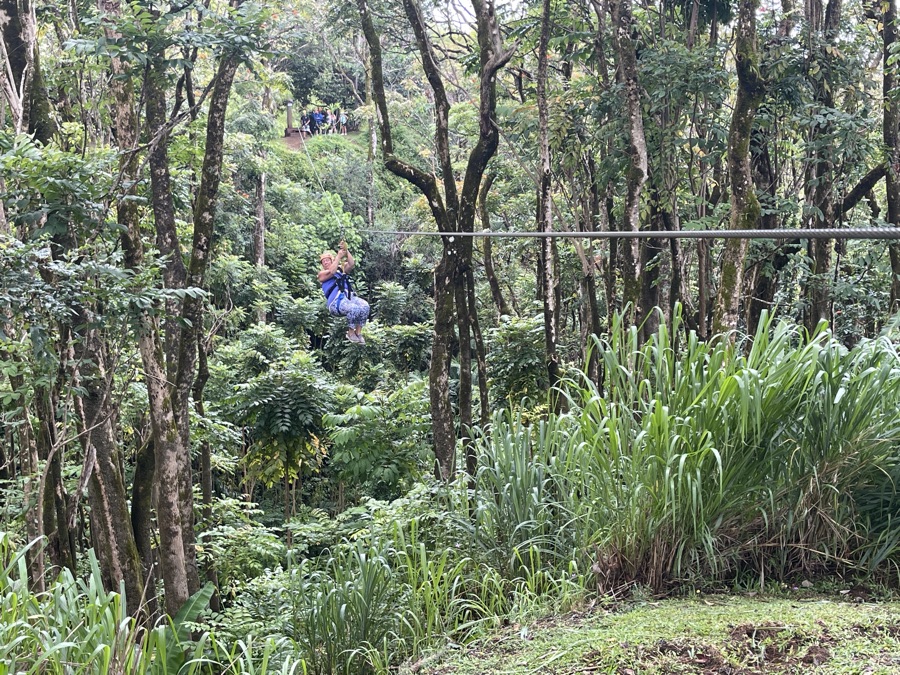
A mere 400 feet this time.
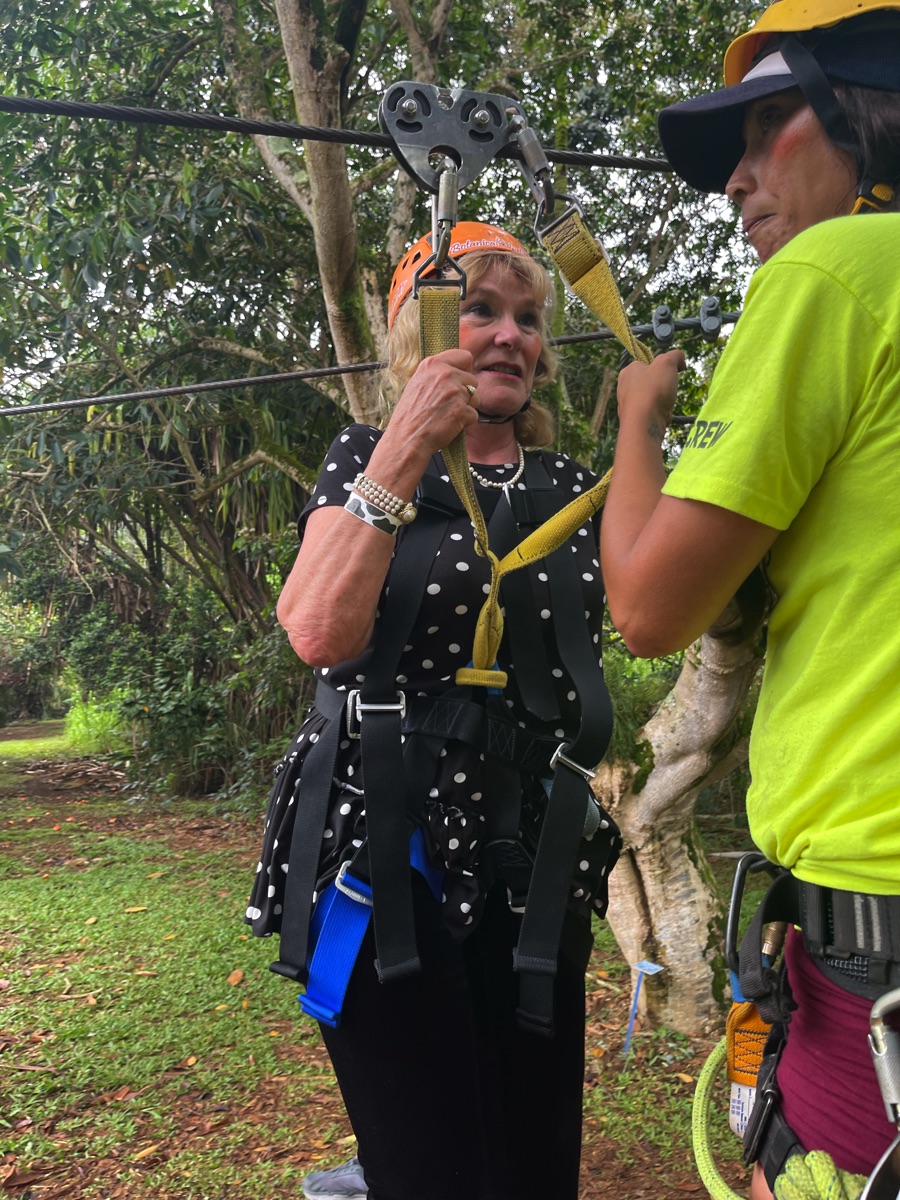
Getting last minute instructions!
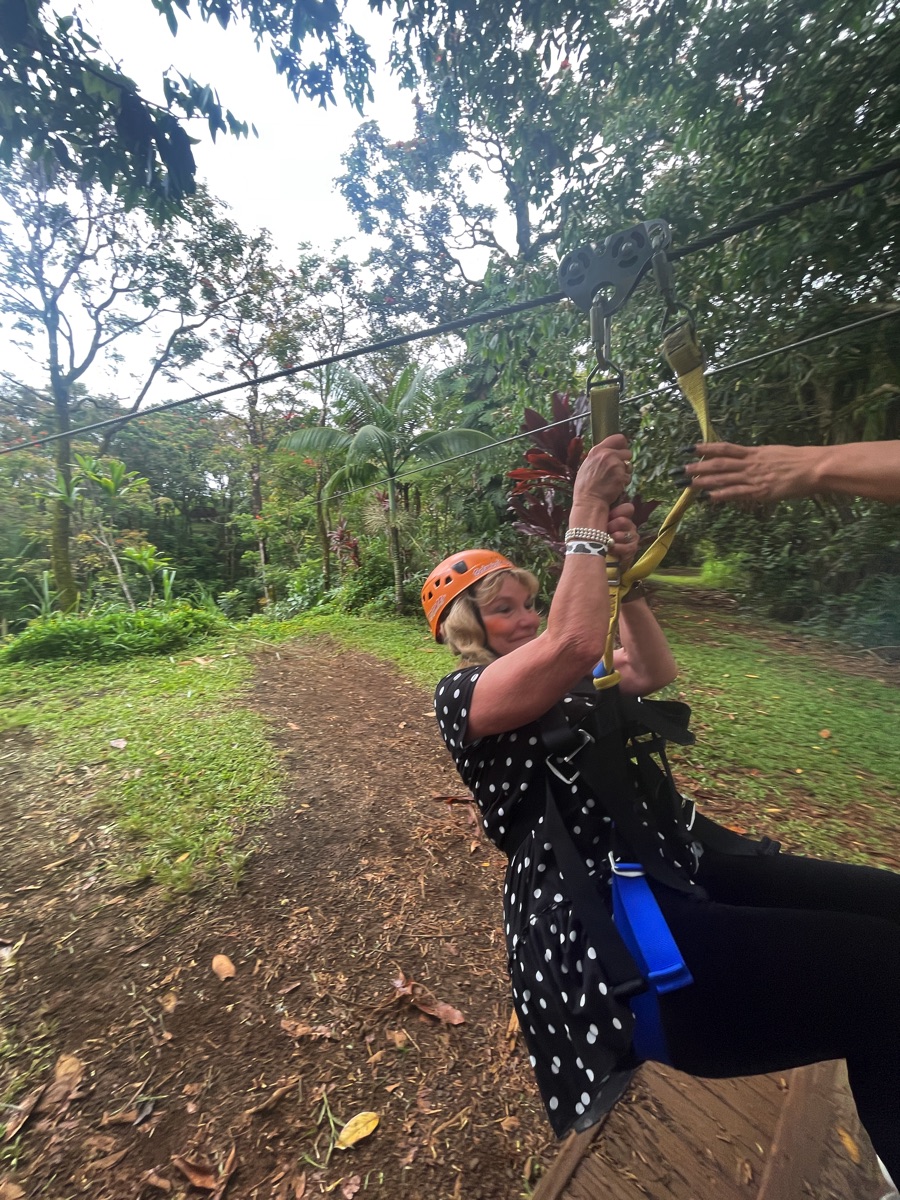
Coming in on a wing and a prayer.
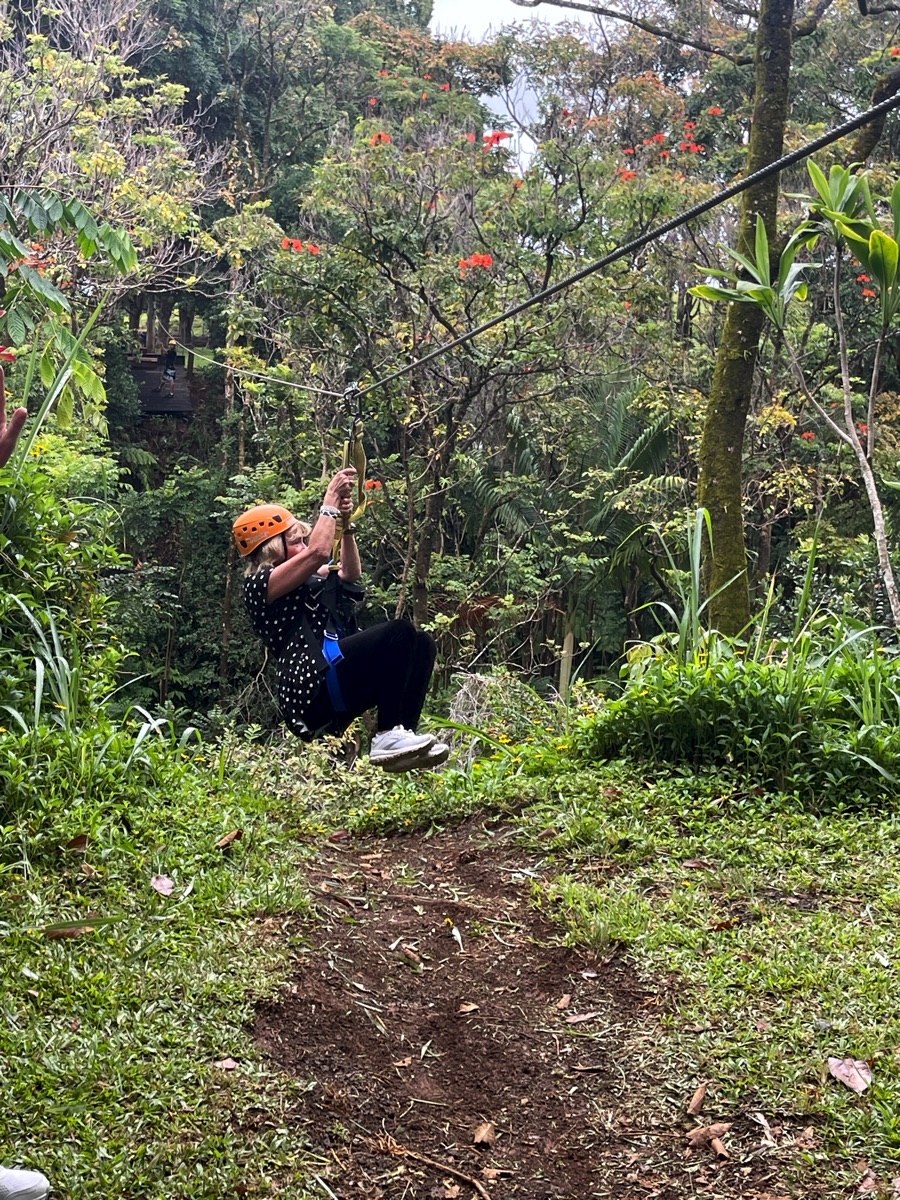
See you on the other side!
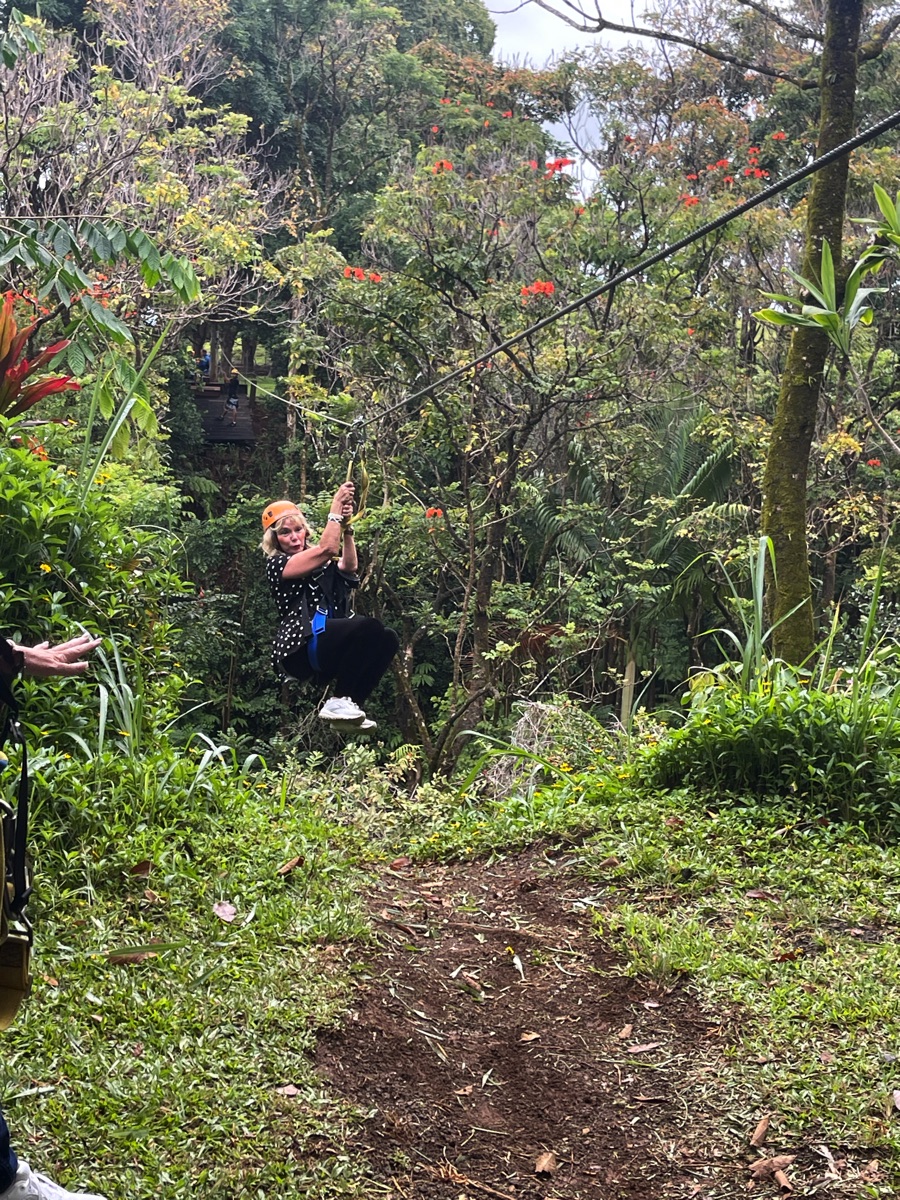
Oh Dear!!!

She gets smaller and smaller as she leave the platform.
The Big Island's Umauma Falls zipline has nine (9) long lines with 2 MILES of spectacular ziping, over 14 waterfalls and great ocean views.
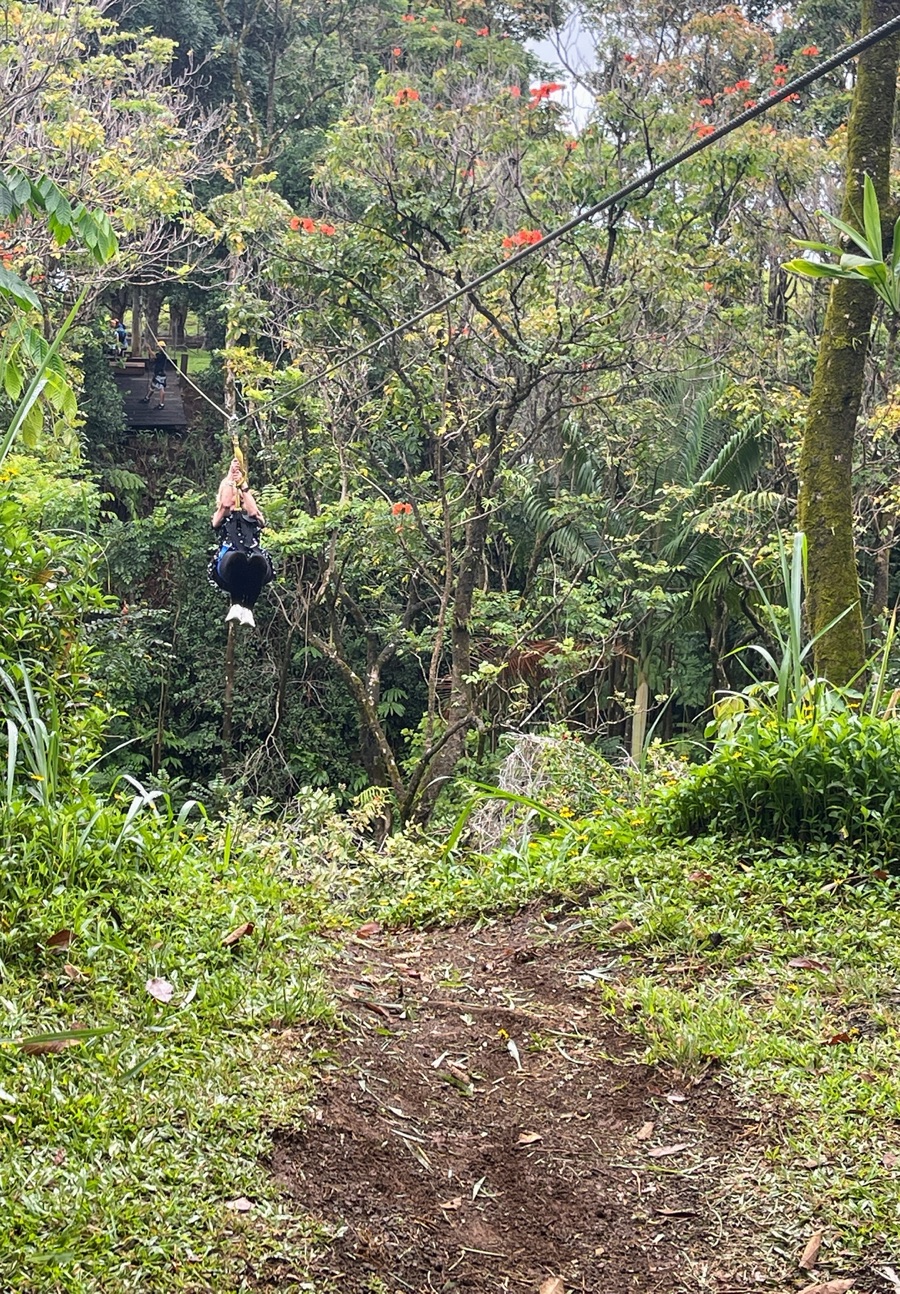
Hang on!
The zip lines are anchored to large diameter wooden posts which are in turn anchored into the ground. They are very strong! However, I always check for termites!
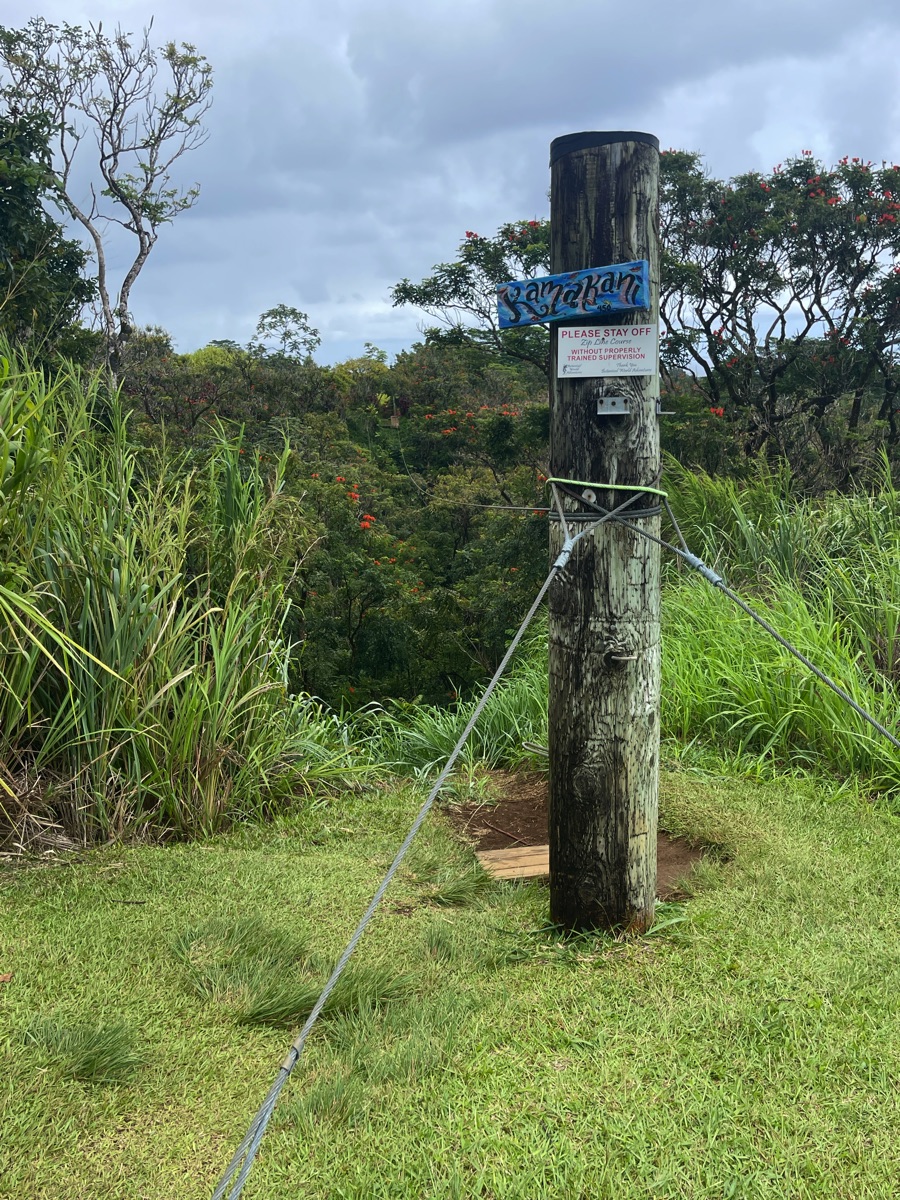
Each separate line has it's own name!
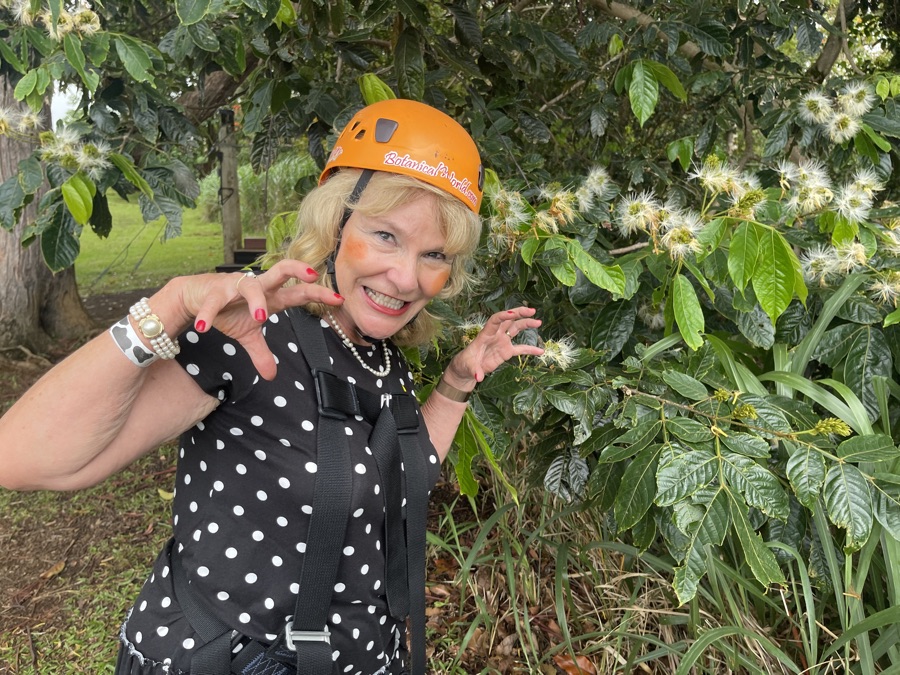
The Scary Jungle Gorilla
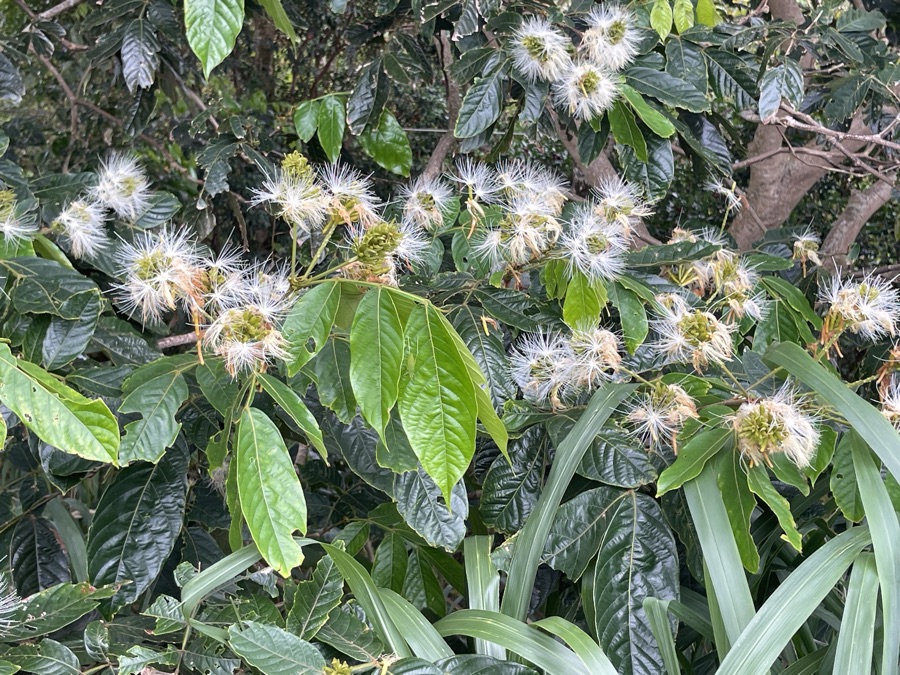
The flowers are quite diverse.
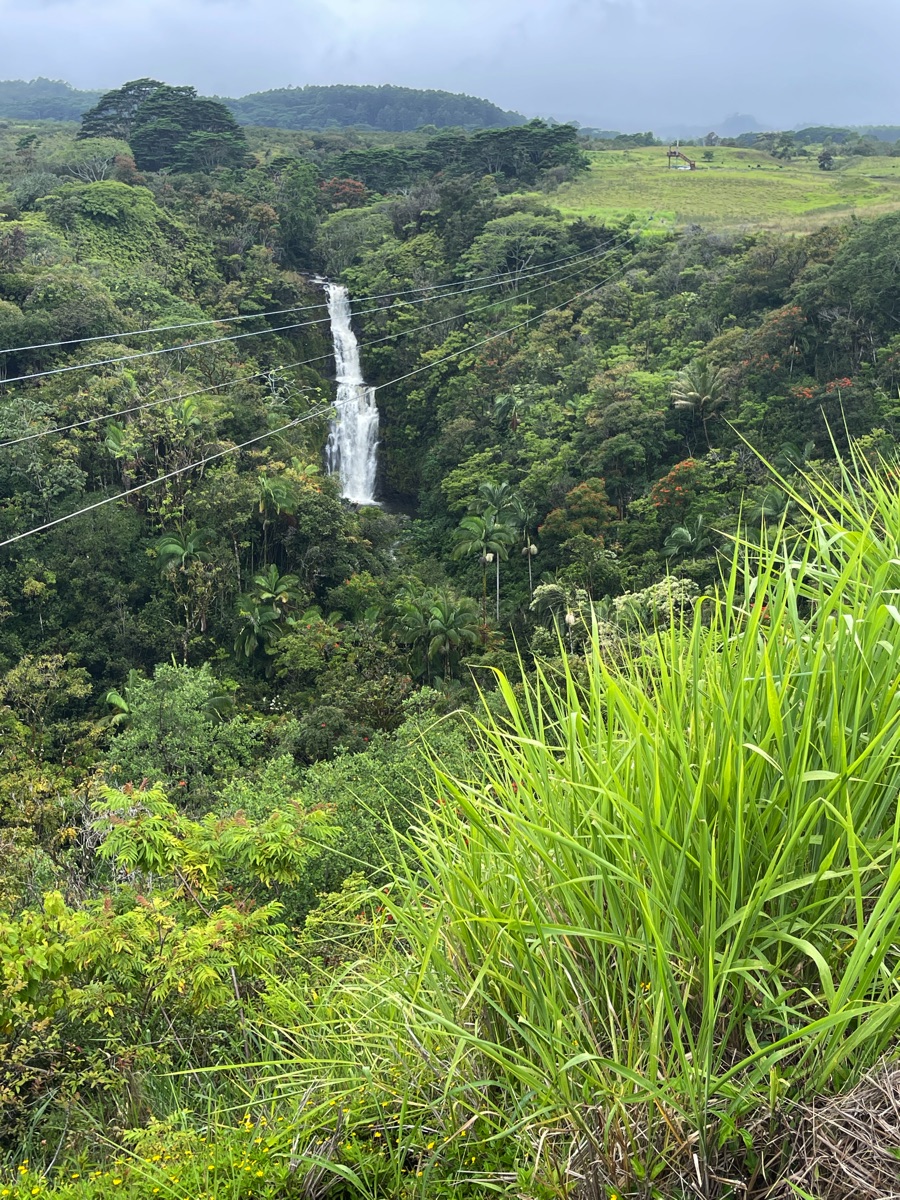
2/3 of a mile long over the falls!
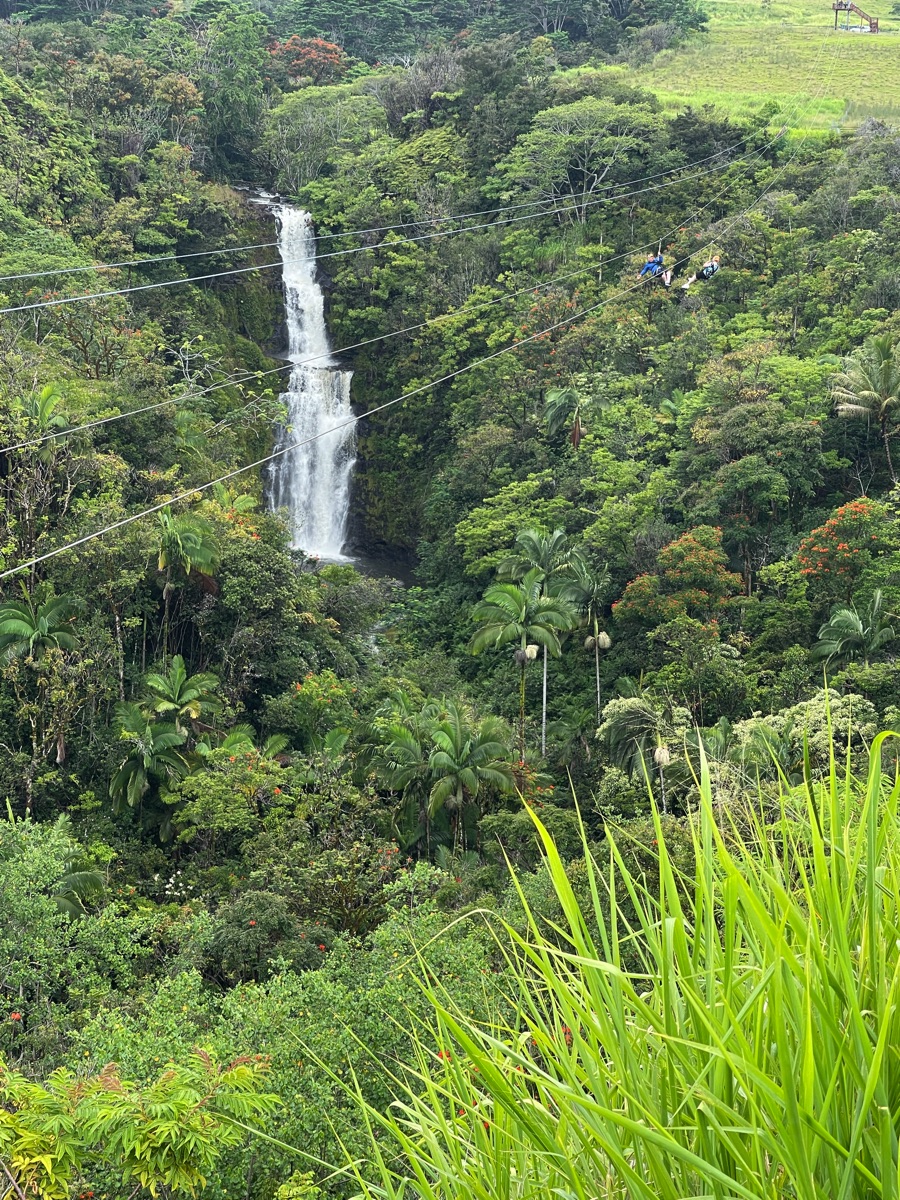
Two at a time!
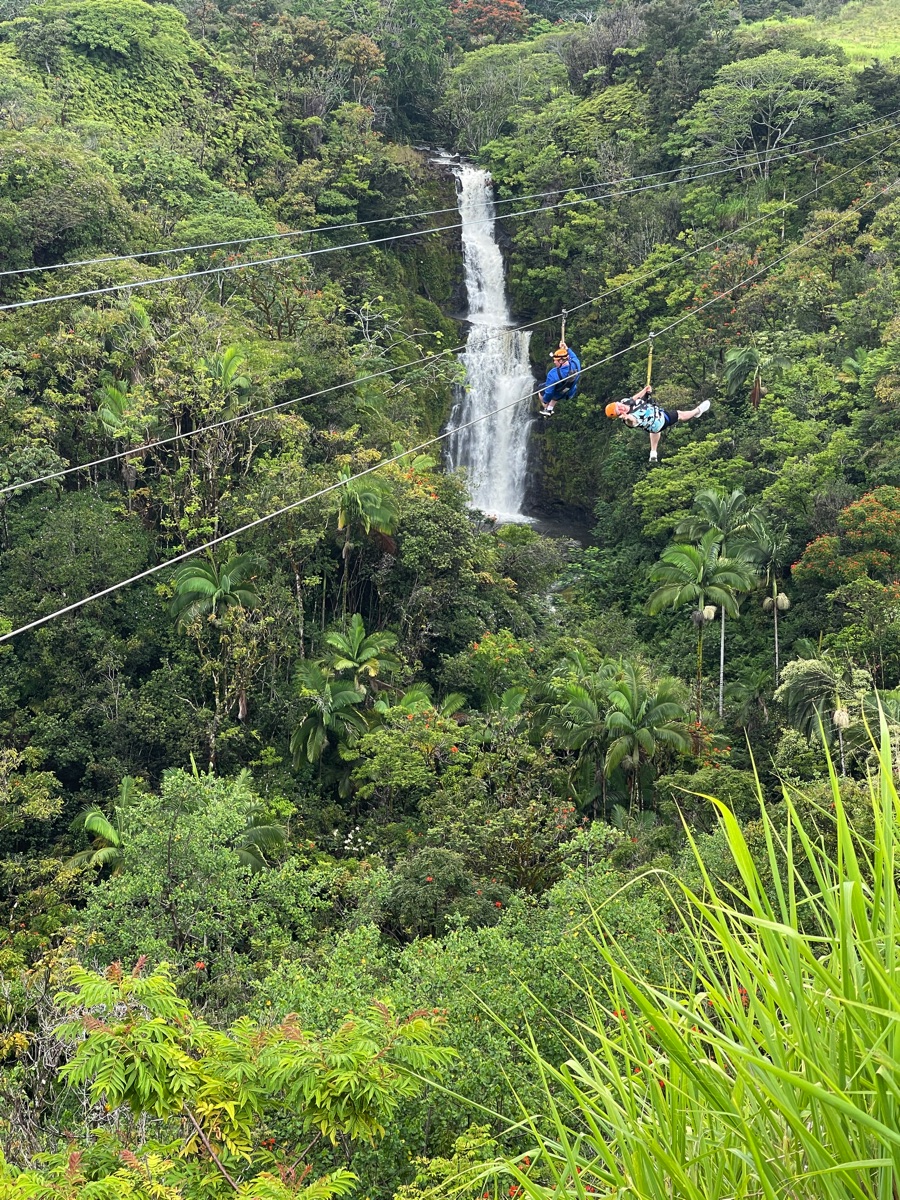
At 40 miles per hour!
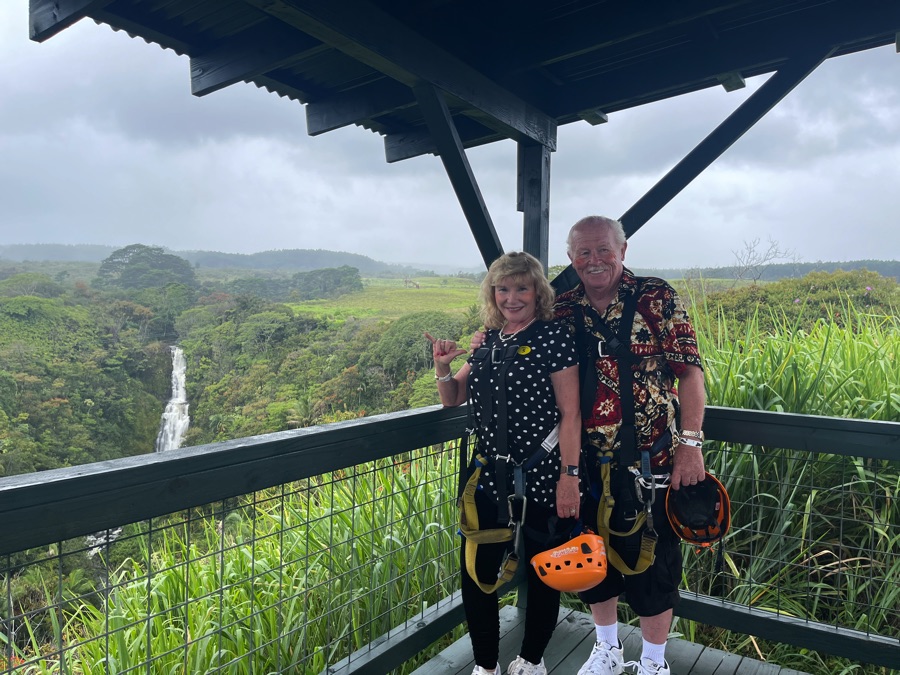
We watched others take the leap!
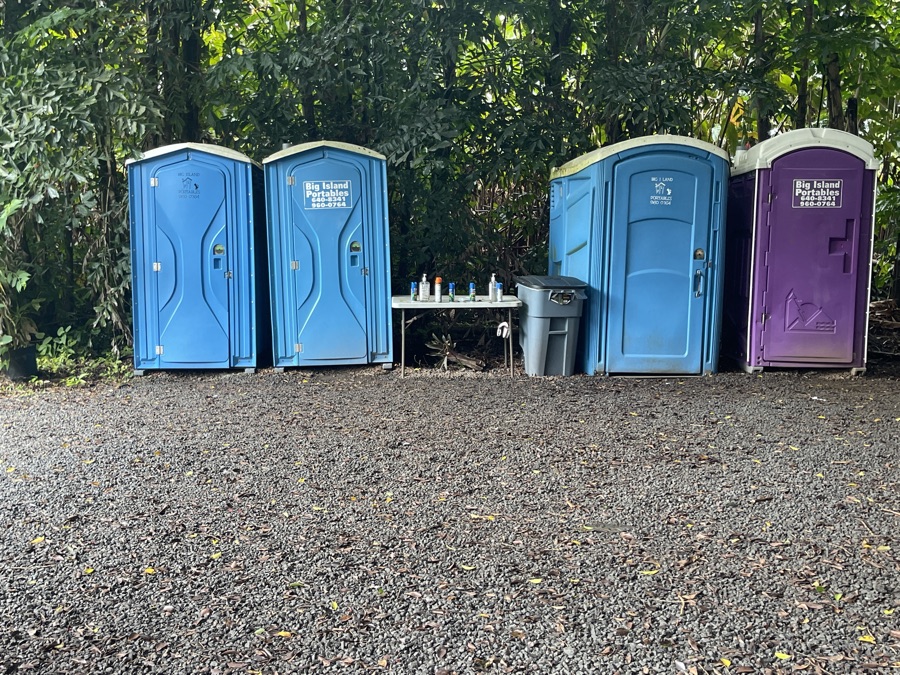
A much needed stop!
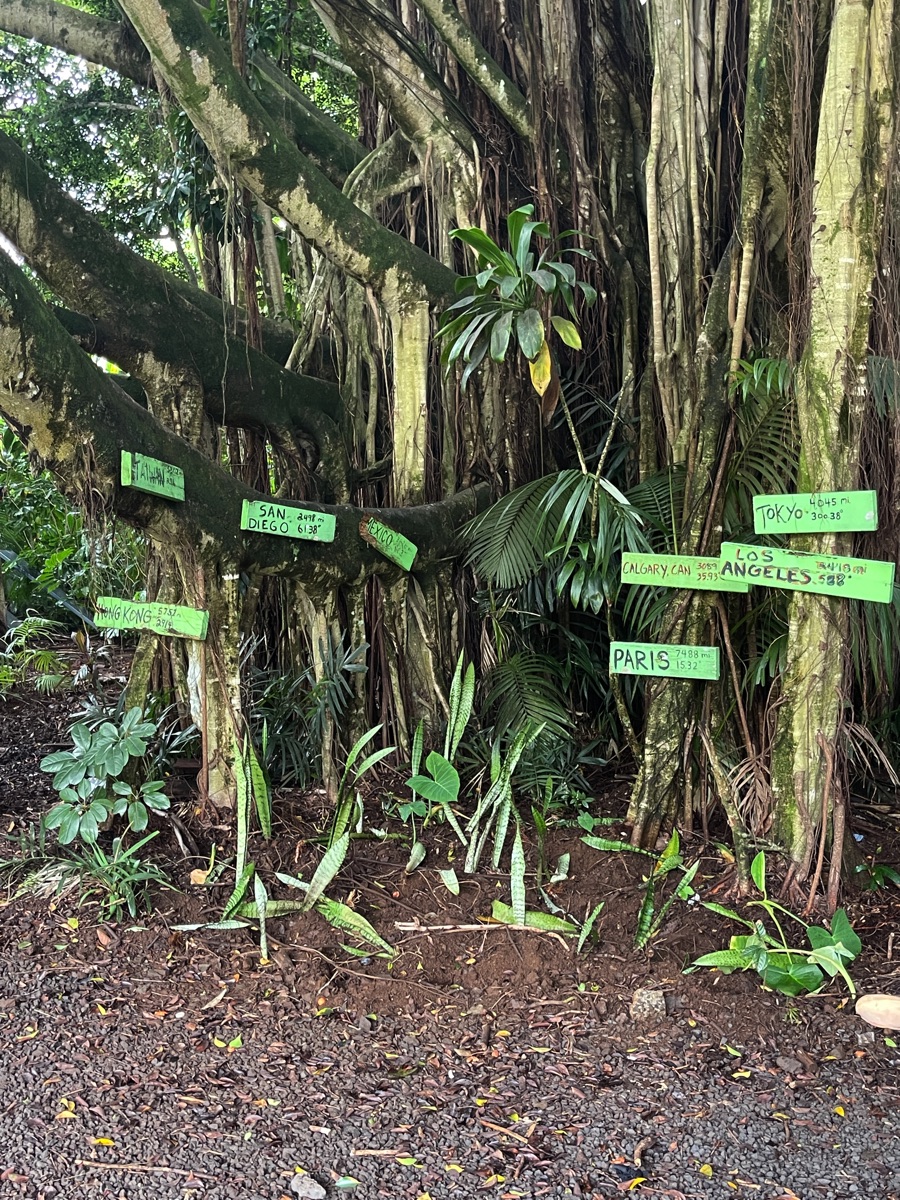
Directions to everywhere!
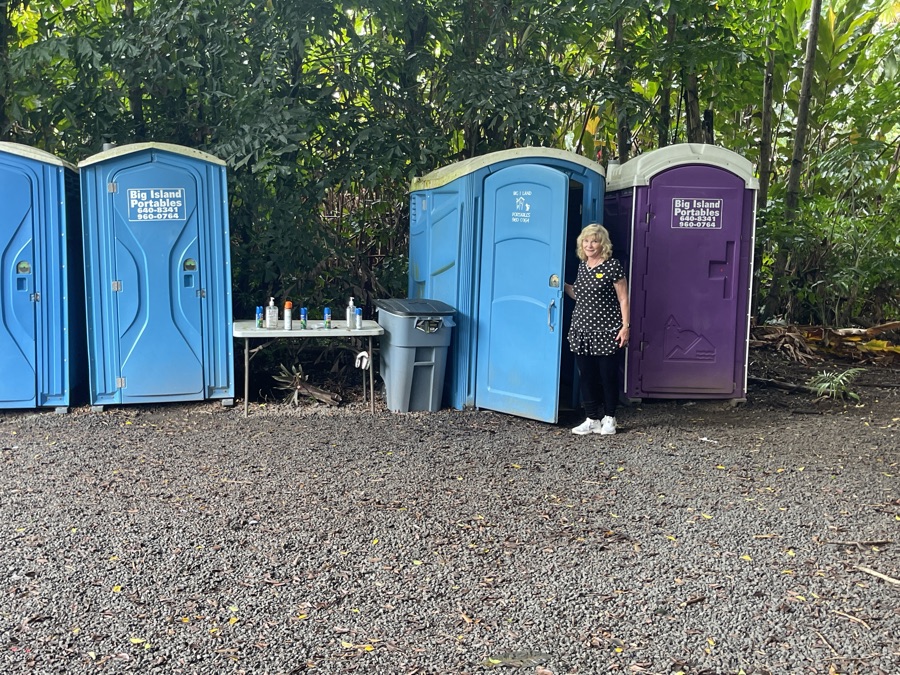
From behind door #3, Ah ha!! There you are!!
(The middle table has sebveral kinds of bug sprays available)

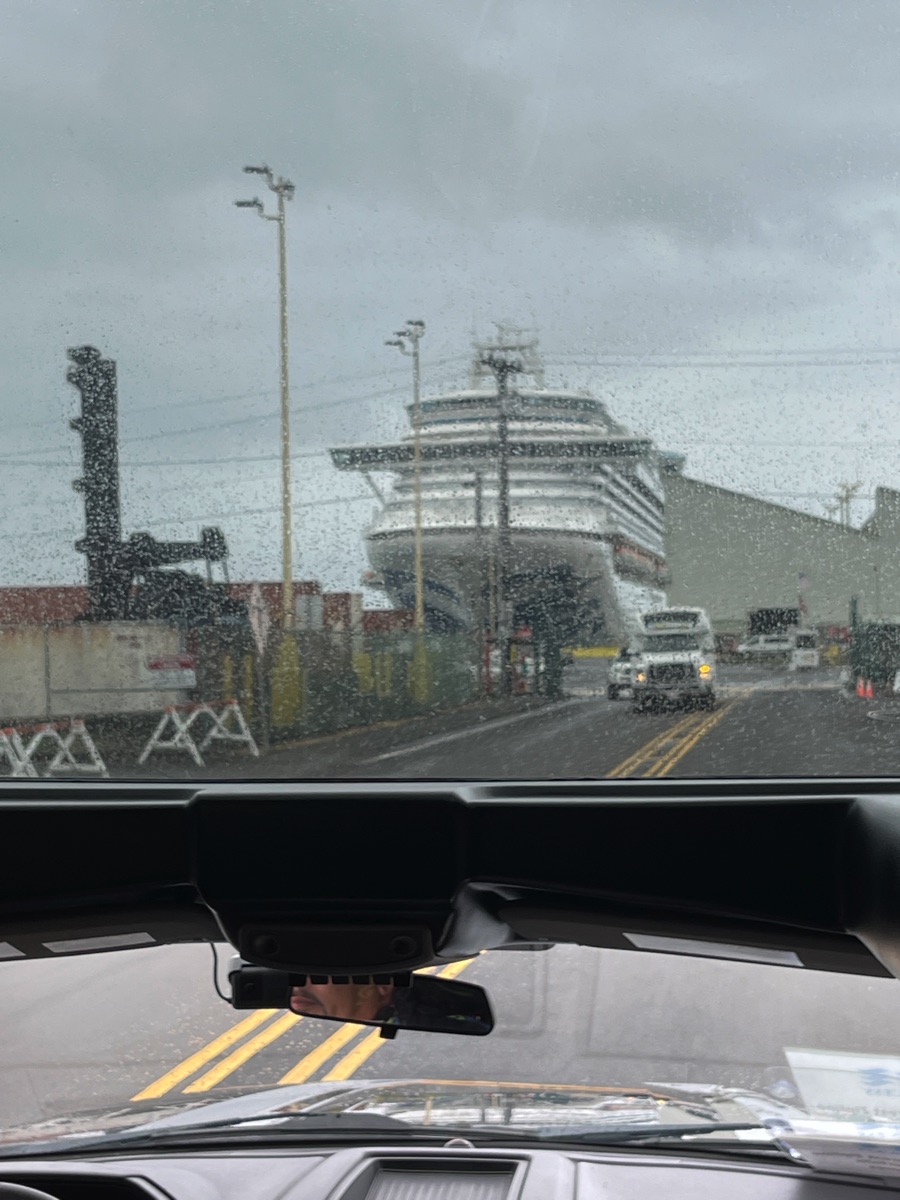
The driver pulled up right by the ship!

We walked the promenade decks for a while to see both views from the ship!
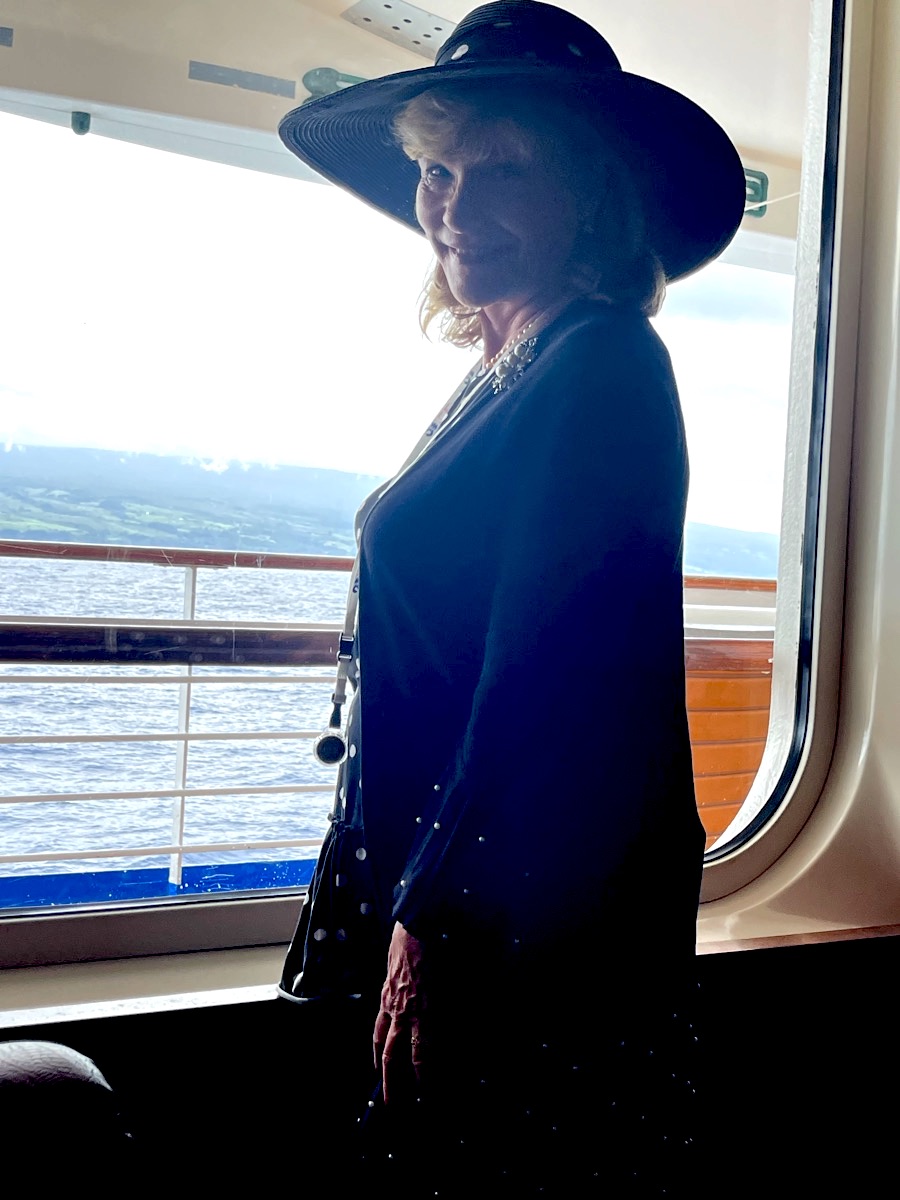
Heading out to sea, on our way to Honolulu.

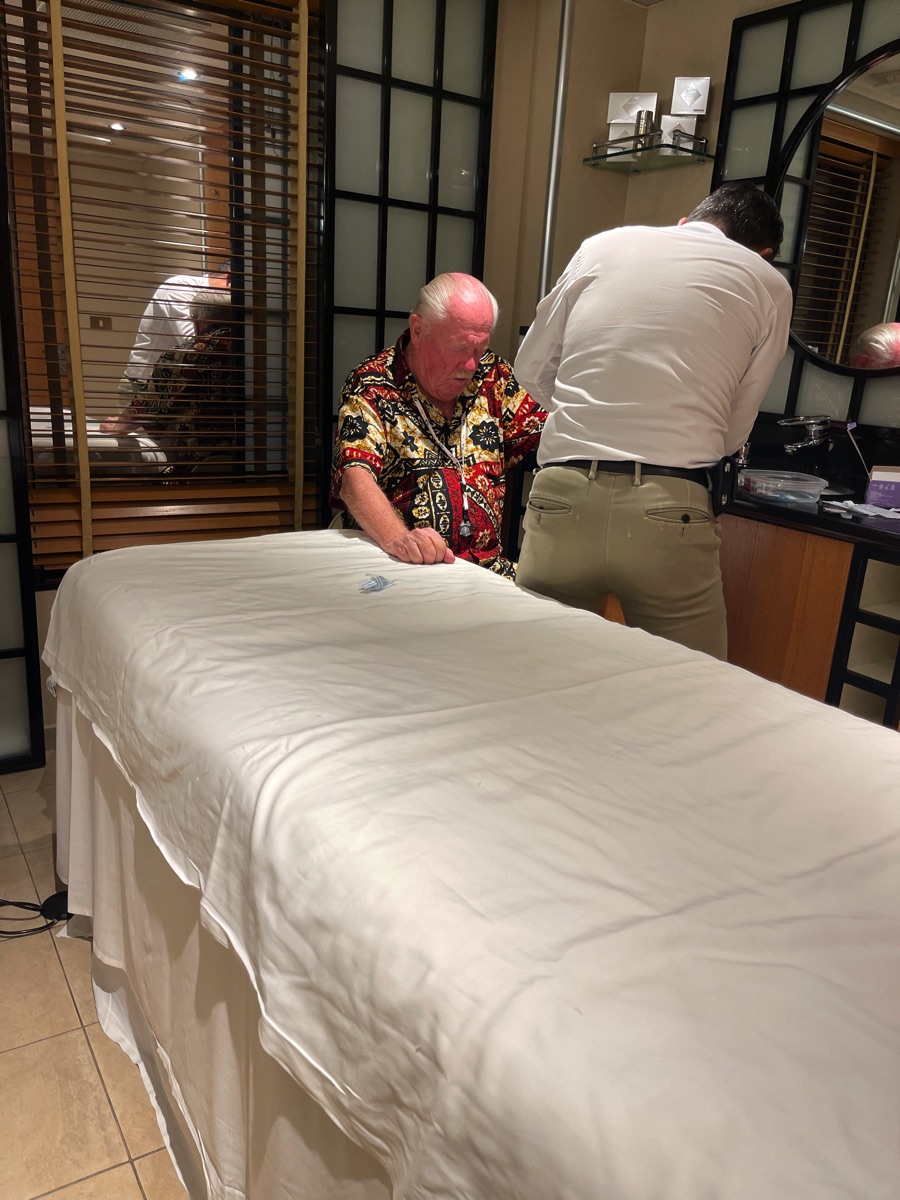
I had an acupuncture appointment at 5:00 pm
Acupuncture is a technique in which practitioners insert fine needles into the skin to treat health problems. The needles may be manipulated manually or stimulated with small electrical currents (electro acupuncture). Acupuncture has been in use in some form for at least 2,500 years.
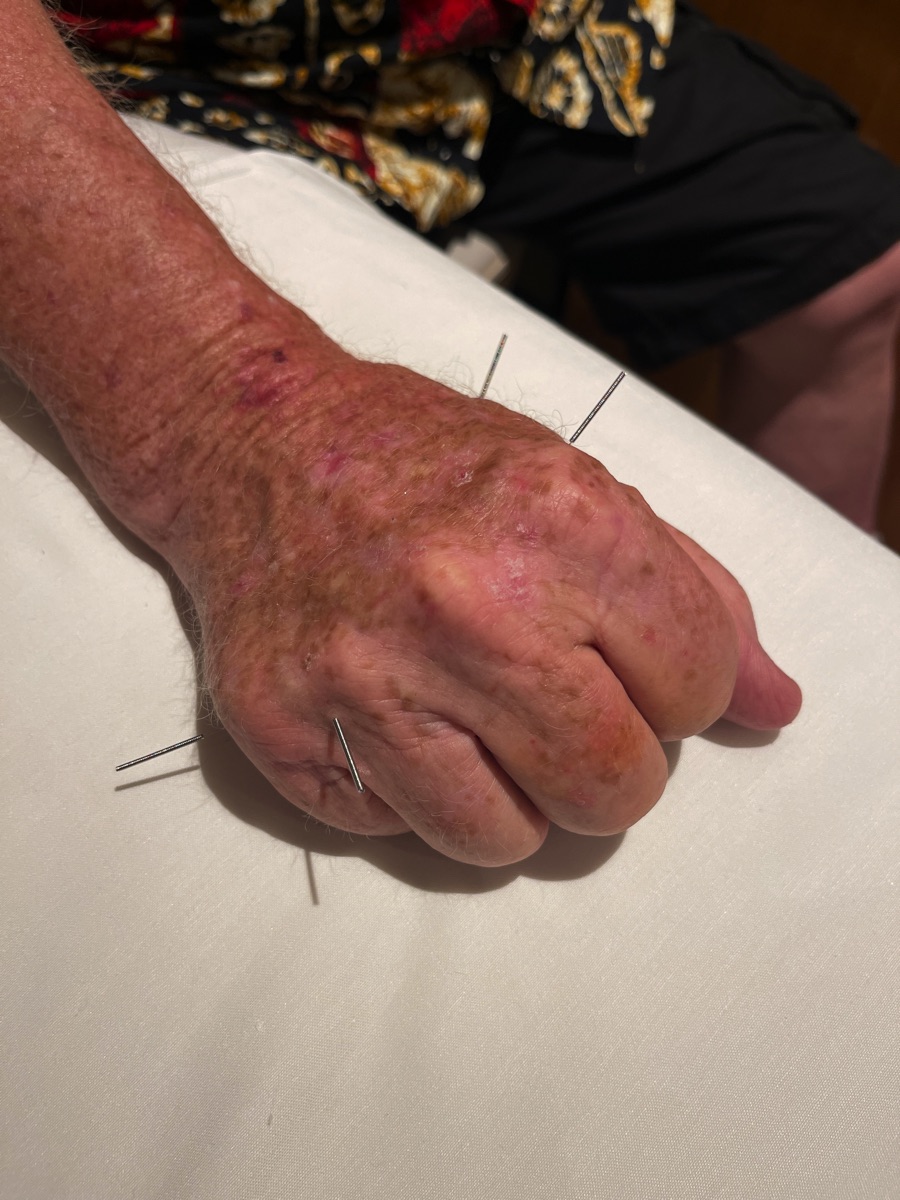
I can't explain it but it worked.. No sciatica for the rest of the trip!
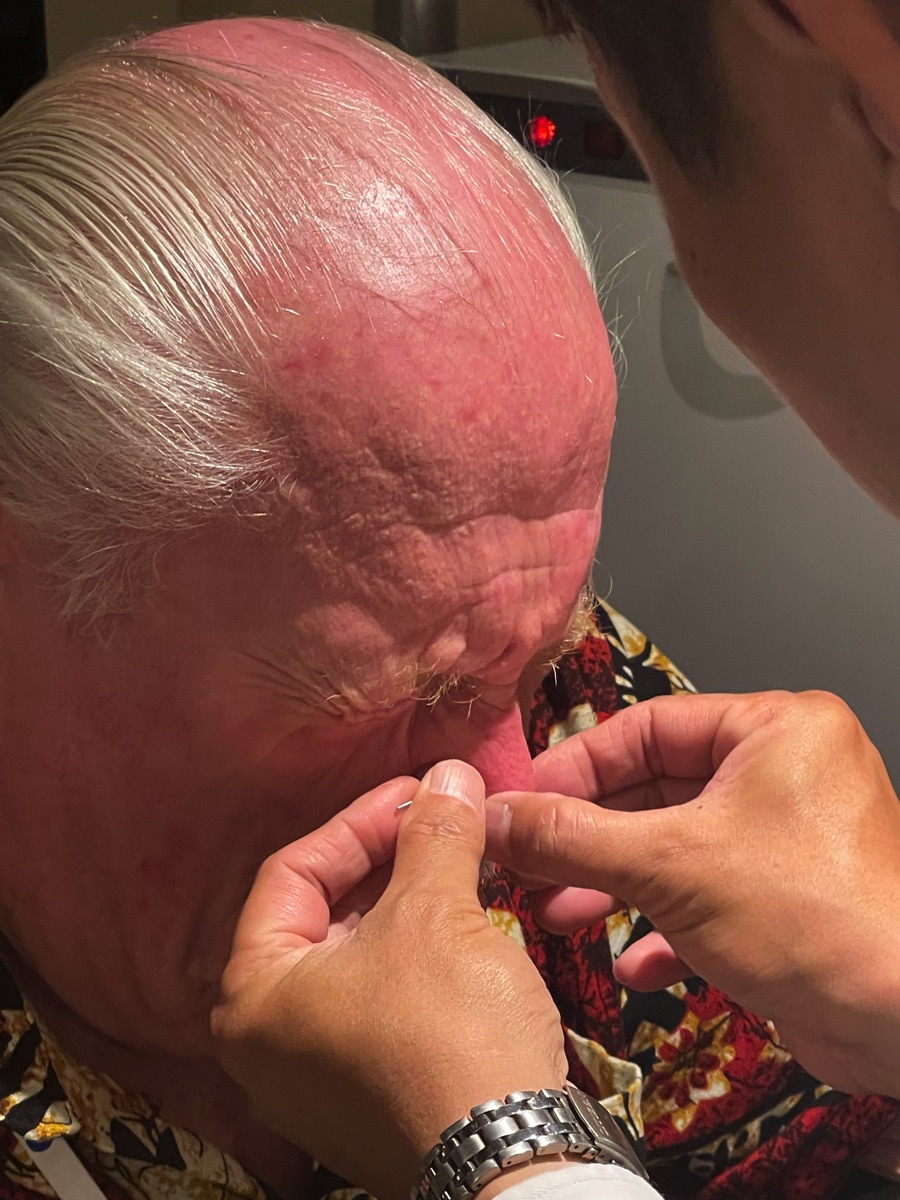
Ouch!
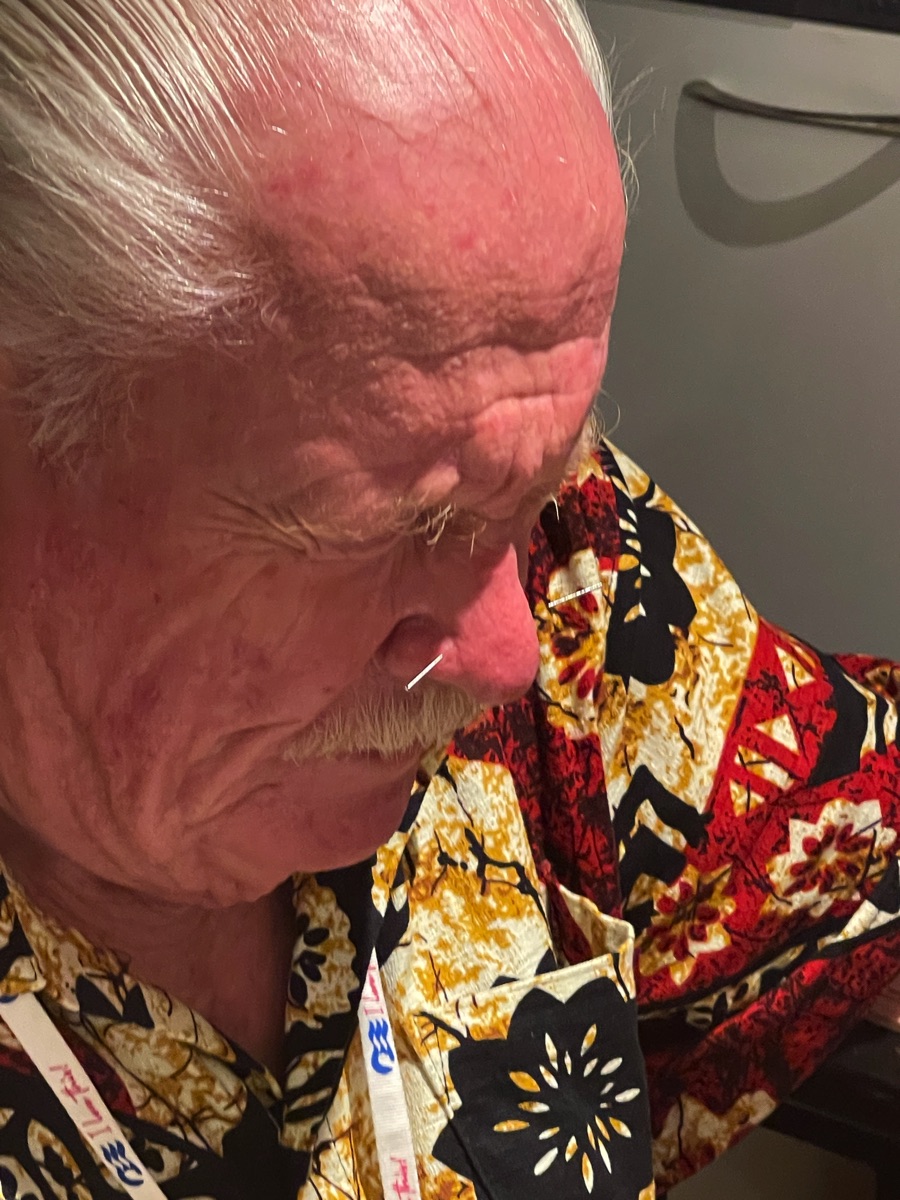
They call me "Paul The Pin Cushion!"
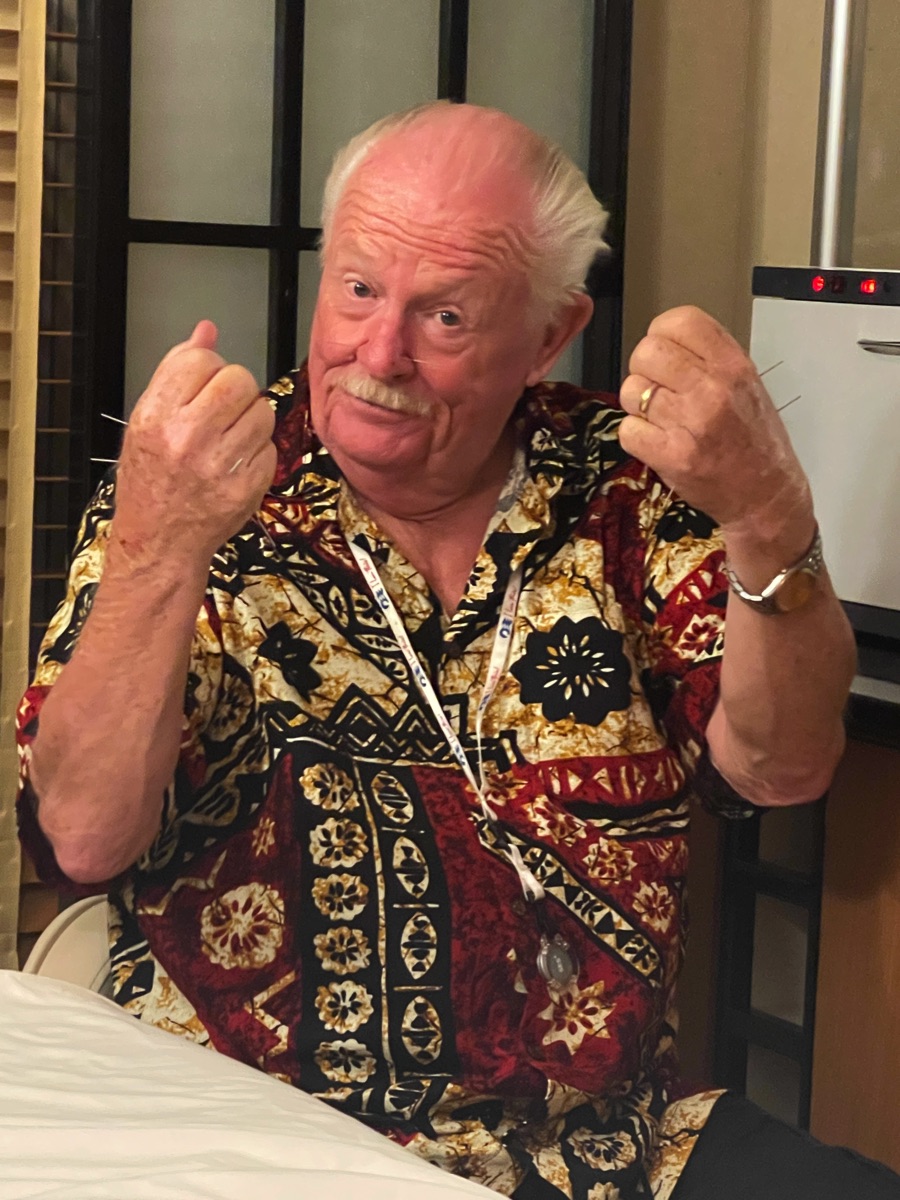
I have no idea how it works but it did!
Next Halloween I will go as a pin cushion!
We were beat after all the walking and zipping so we had a lite dinner and crashed for tomorrow is Honolulu.
Sad News - A passenger overboard incident occurred aboard Princess Cruises' "EMERALD PRINCESS" on August 11th. Kenneth Schwalbe, a 59-year-old from California, is currently presumed to be deceased. This tragic event represents the third occurrence of a person going overboard within 30 days.
Kenneth Schwalbe was last seen on the ship on August 10th at 8:30 PM. Despite the efforts of crew members who thoroughly searched the cruise ship, his whereabouts could not be determined, leading to the official reporting of him as missing the following morning.
Upon receiving the missing person report, the US Coast Guard and Hawaiian Authorities initiated a search operation along the North Coast. Surveillance footage revealed that Kenneth Schwalbe fell from the ship's "deck 9" at 4:18 AM on Friday, August 11th. Deck 9, also known as the Dolphin Deck, is an exposed area exclusively accessible to passengers with adjoining suites.
The incident occurred during the ship's 16-night voyage to Hawaii. Kenneth Schwalbe reportedly went overboard approximately 8 miles off the coast of Hilo, Hawaii. No additional information has been released regarding his travel companions or the circumstances surrounding his fall.
